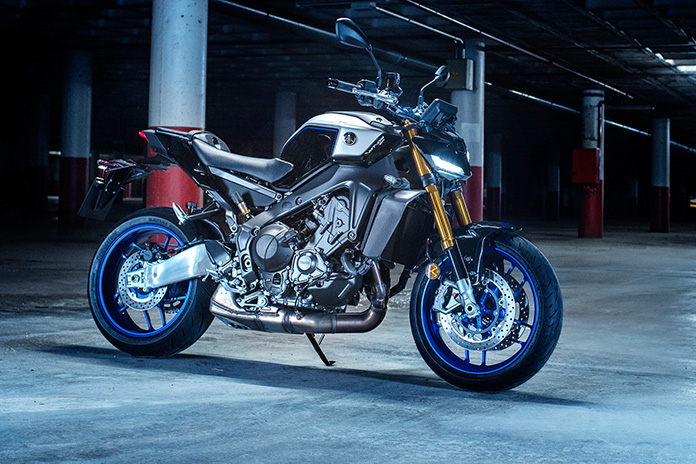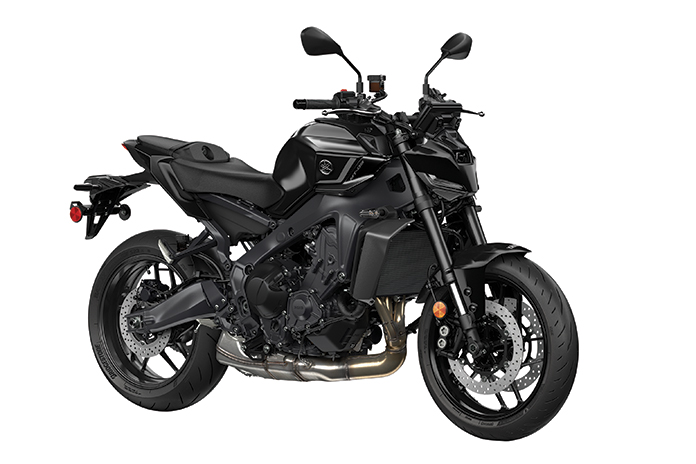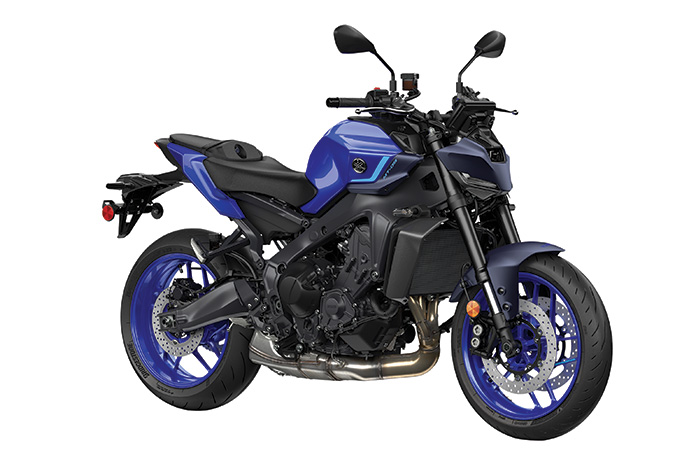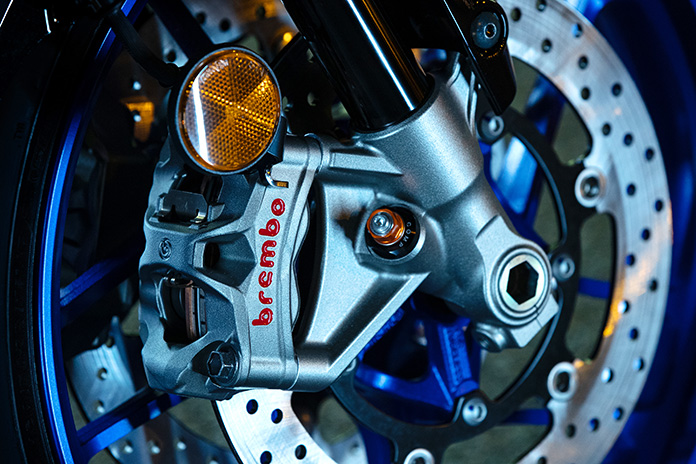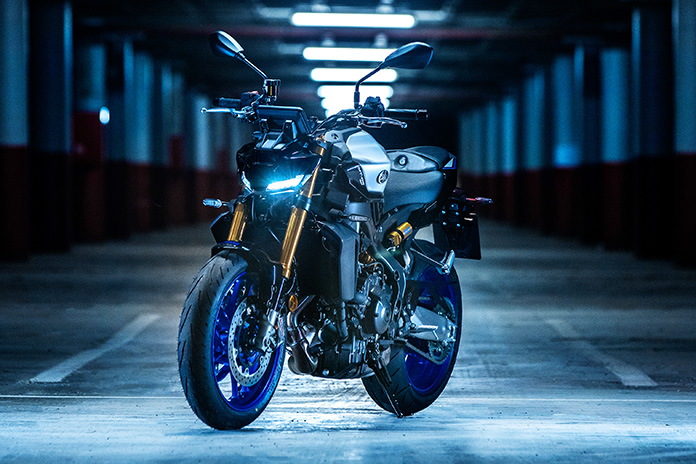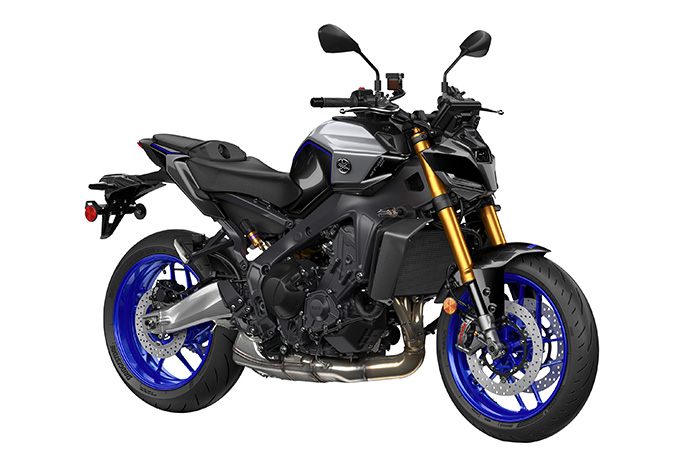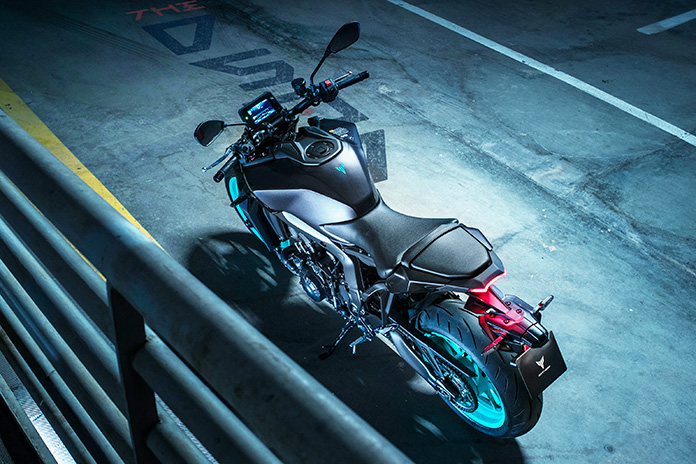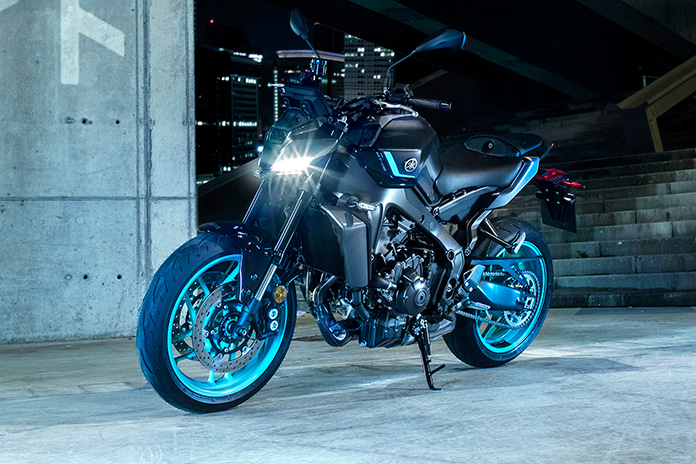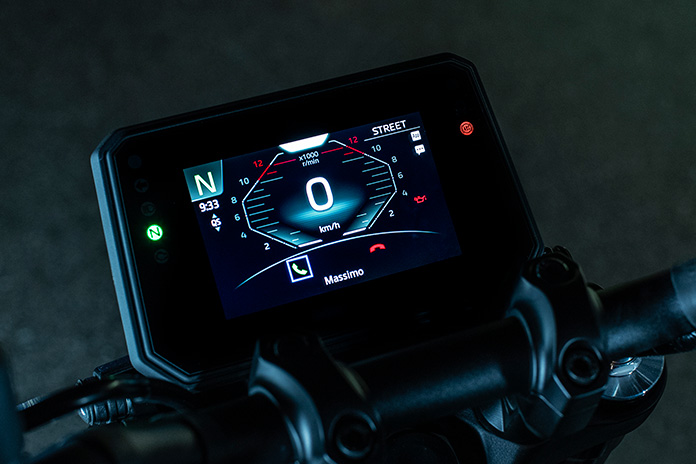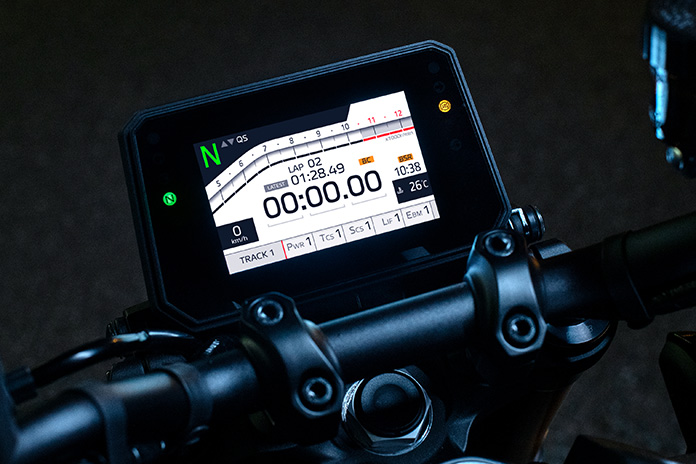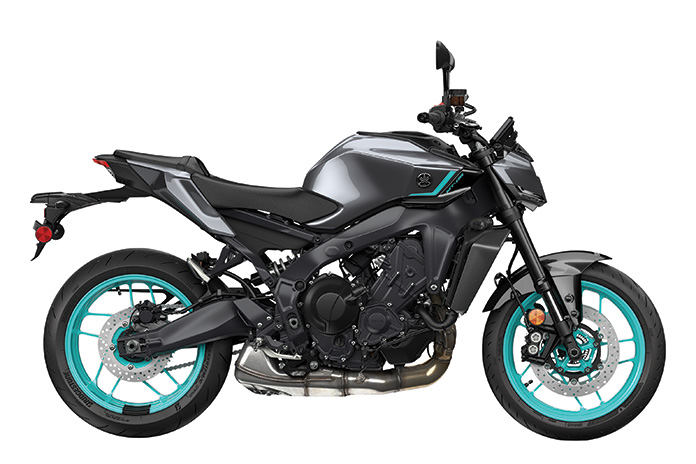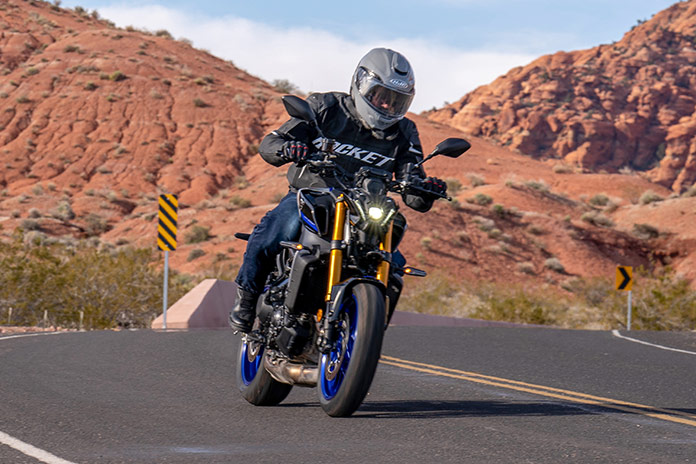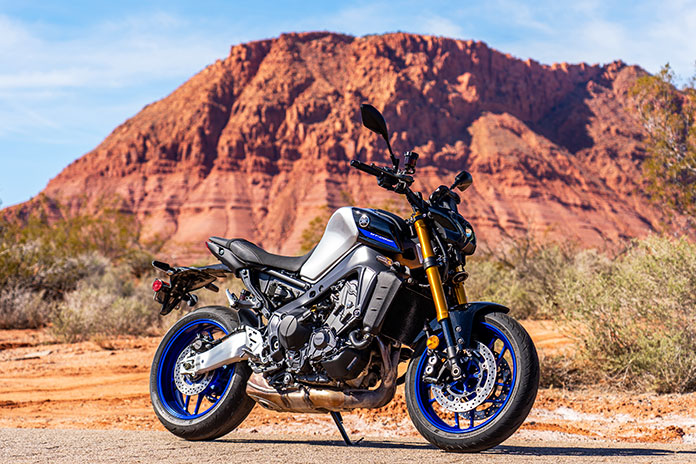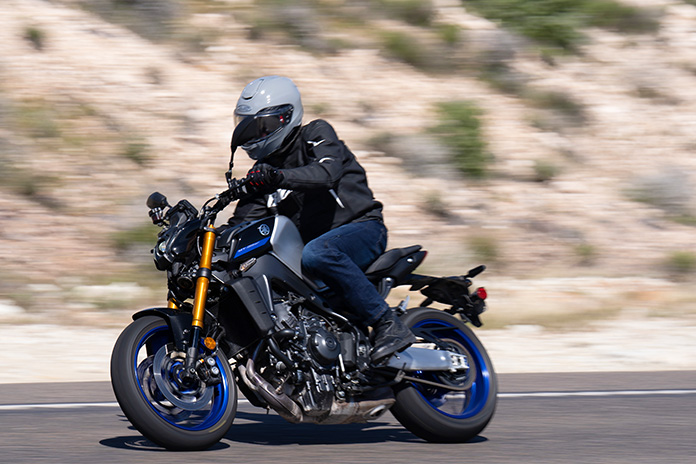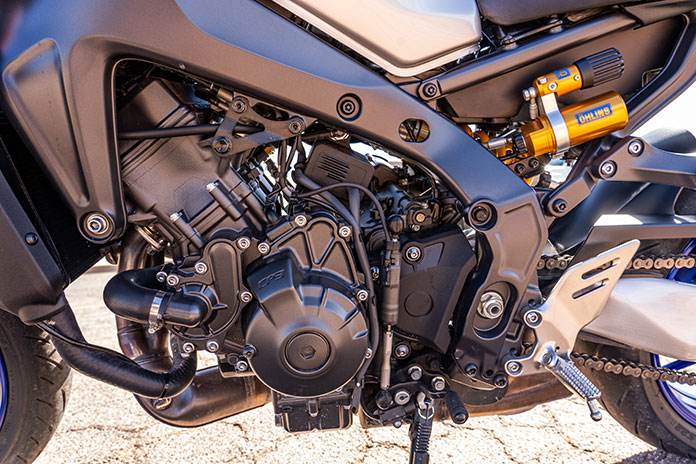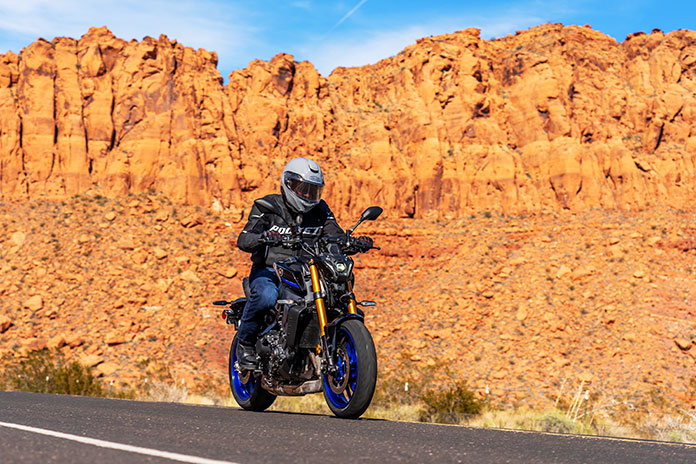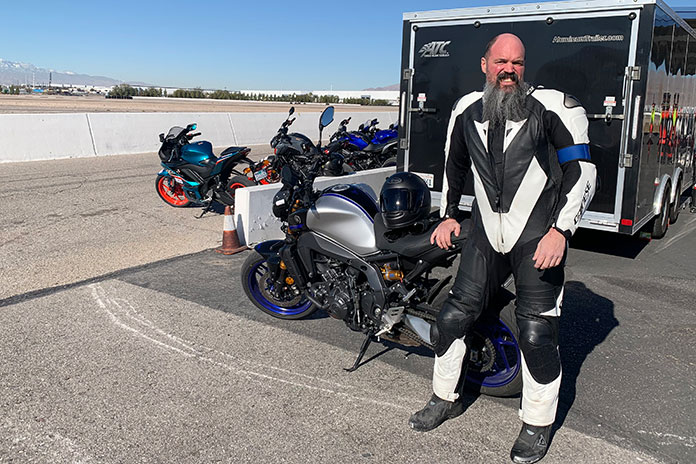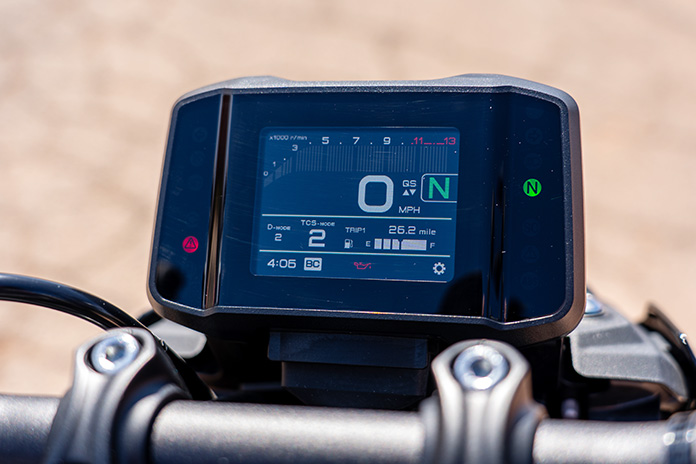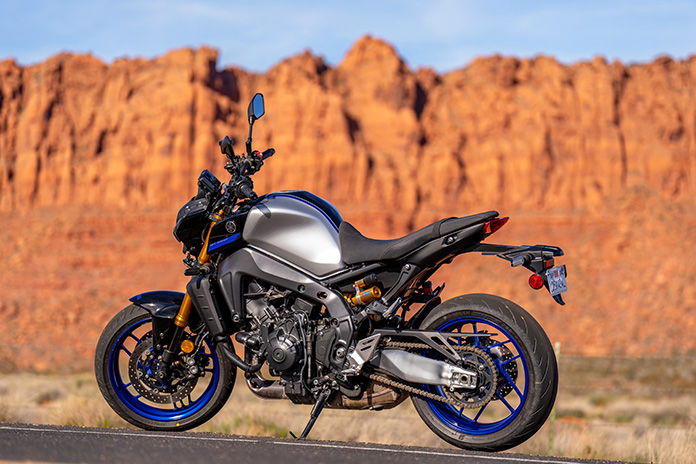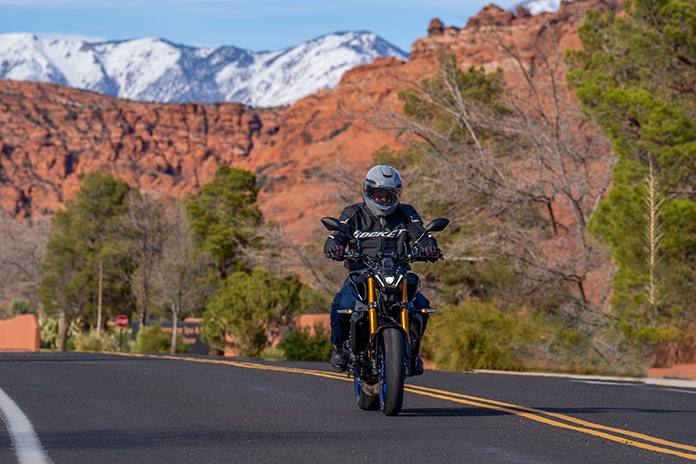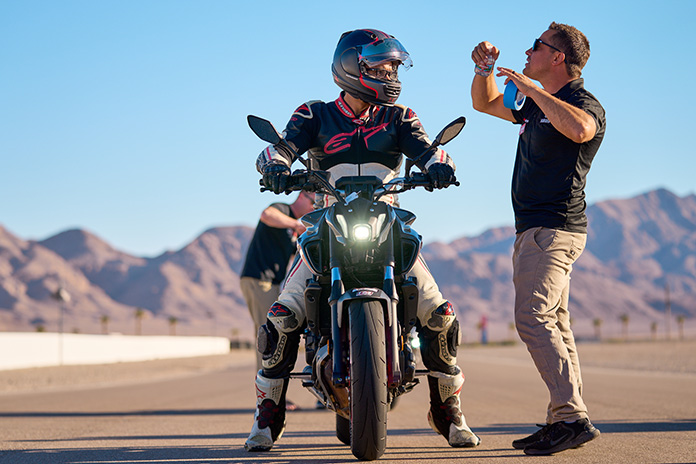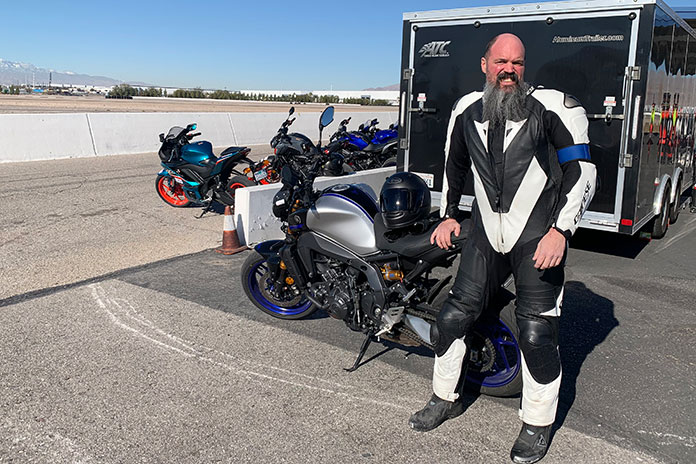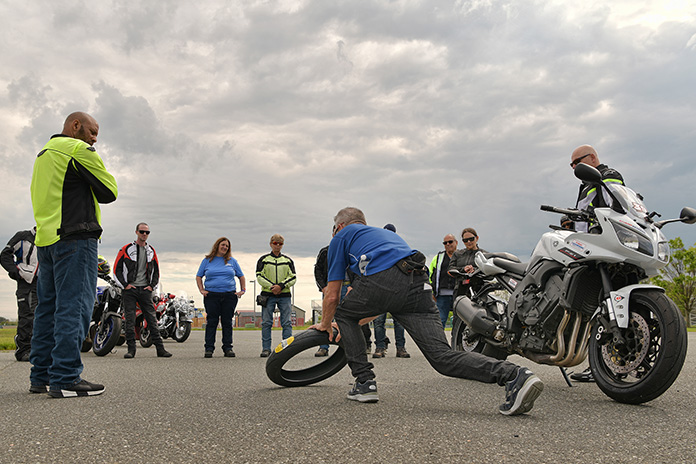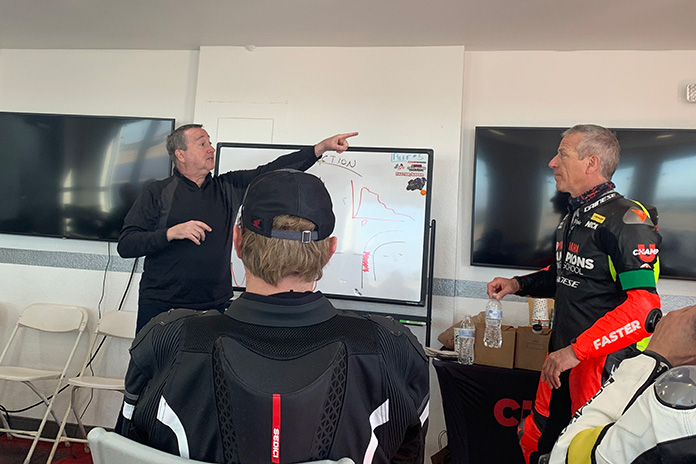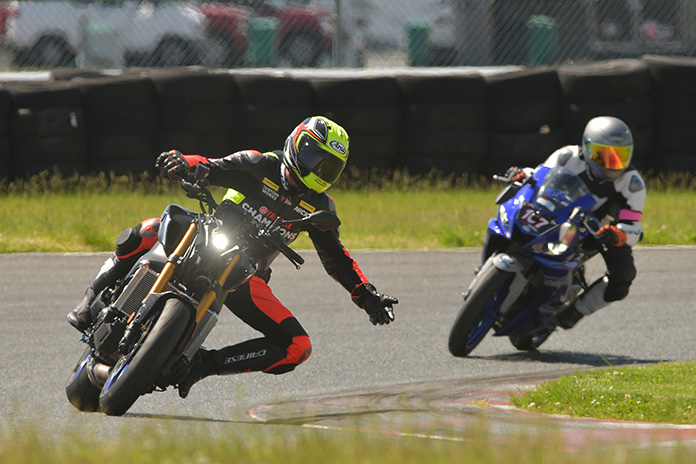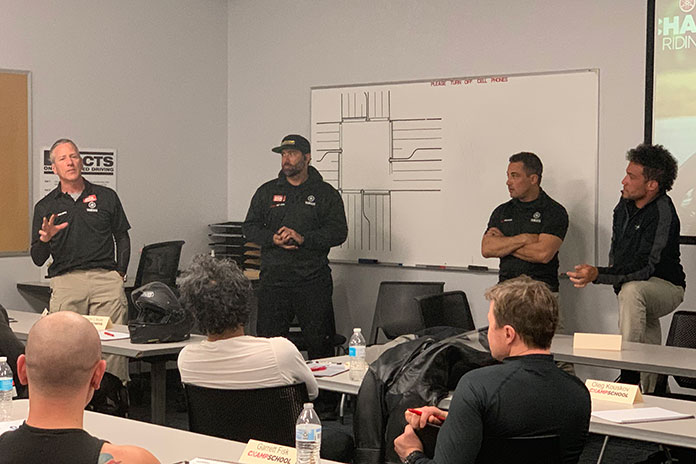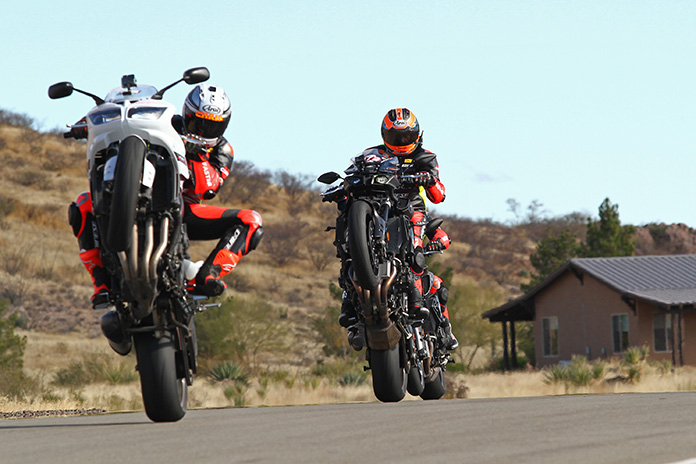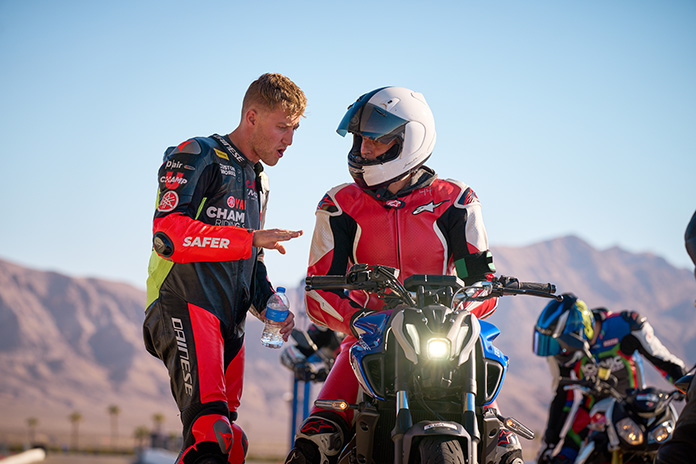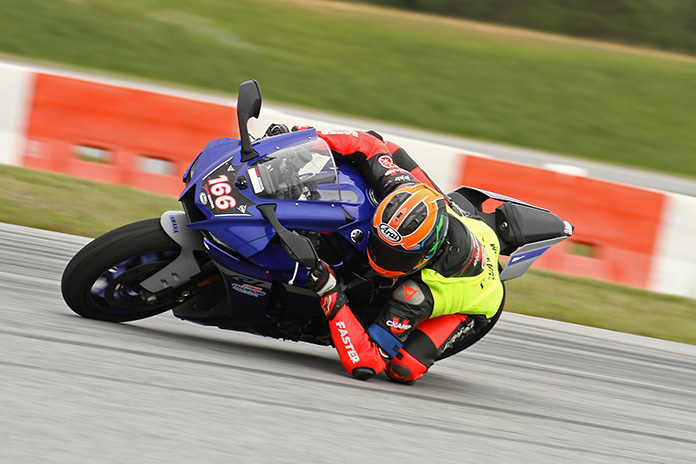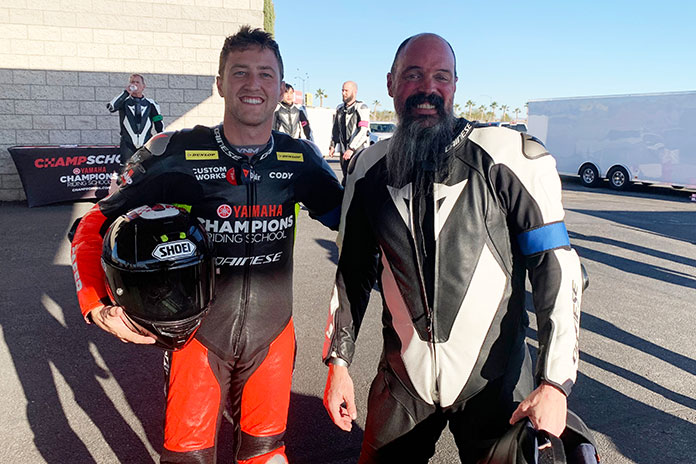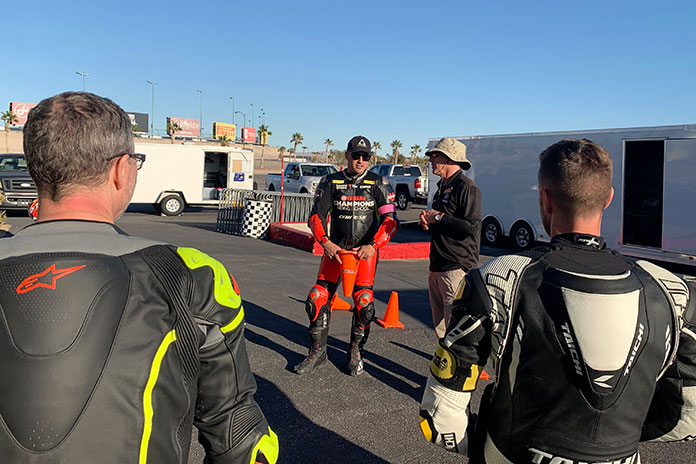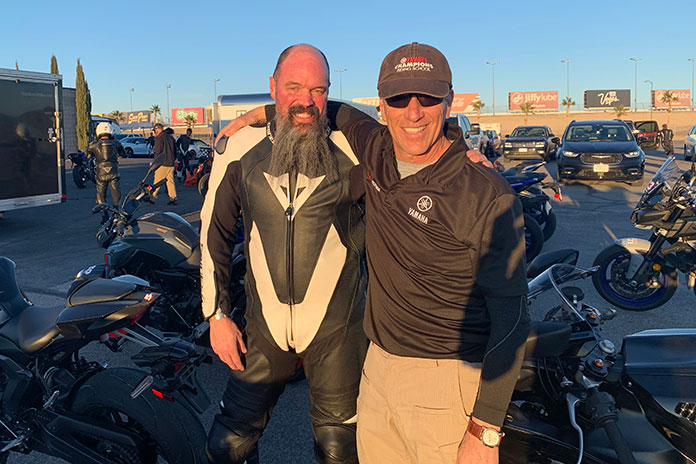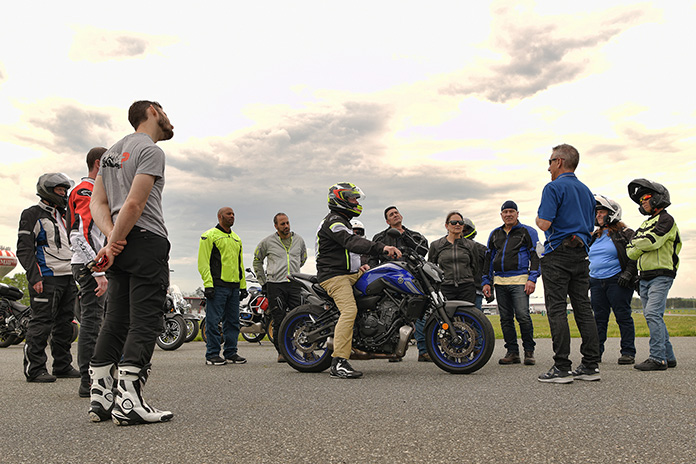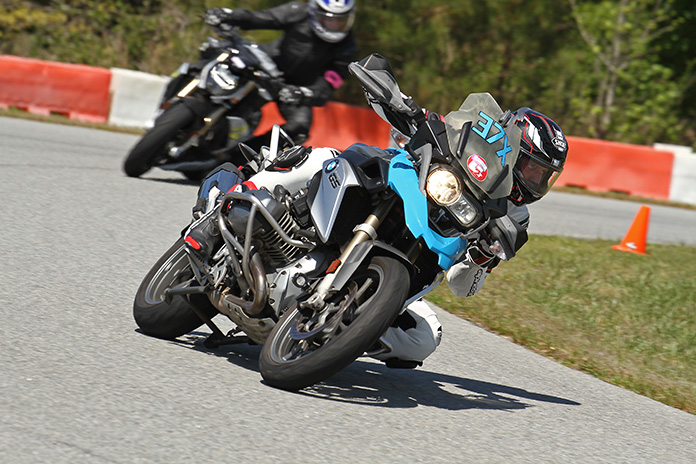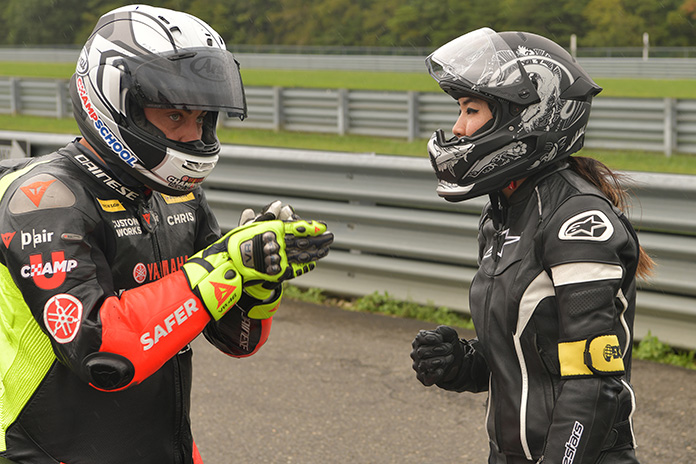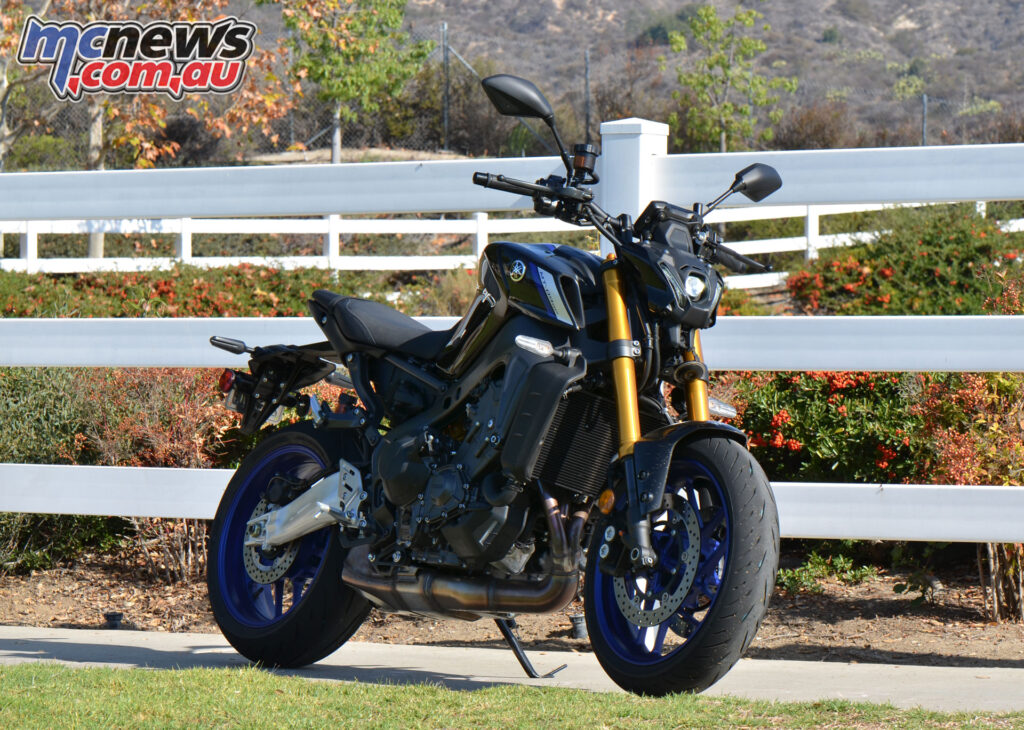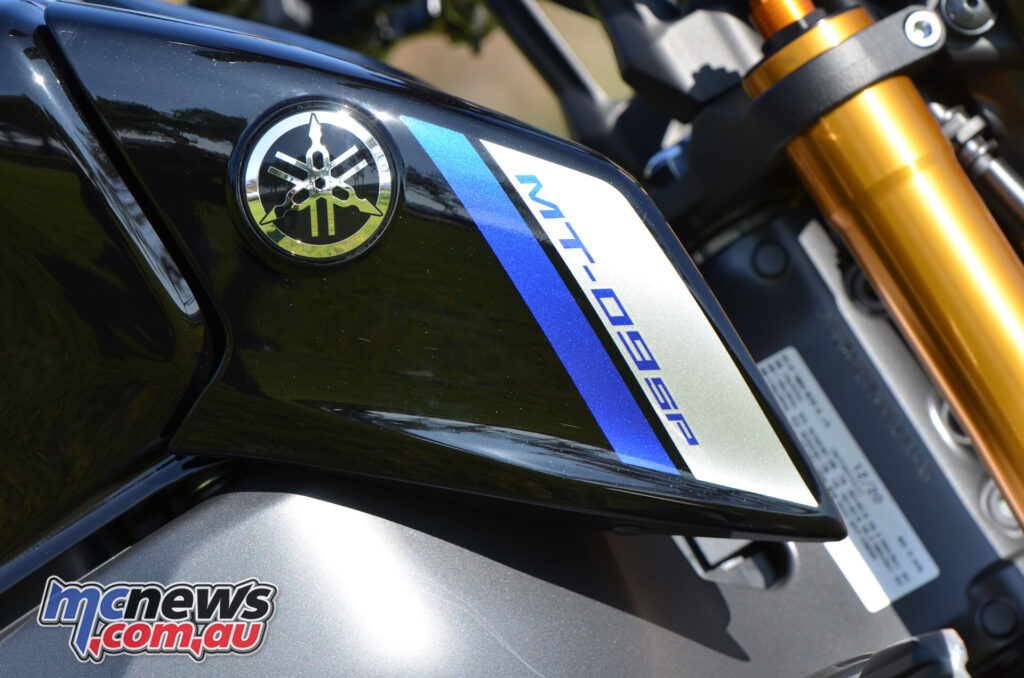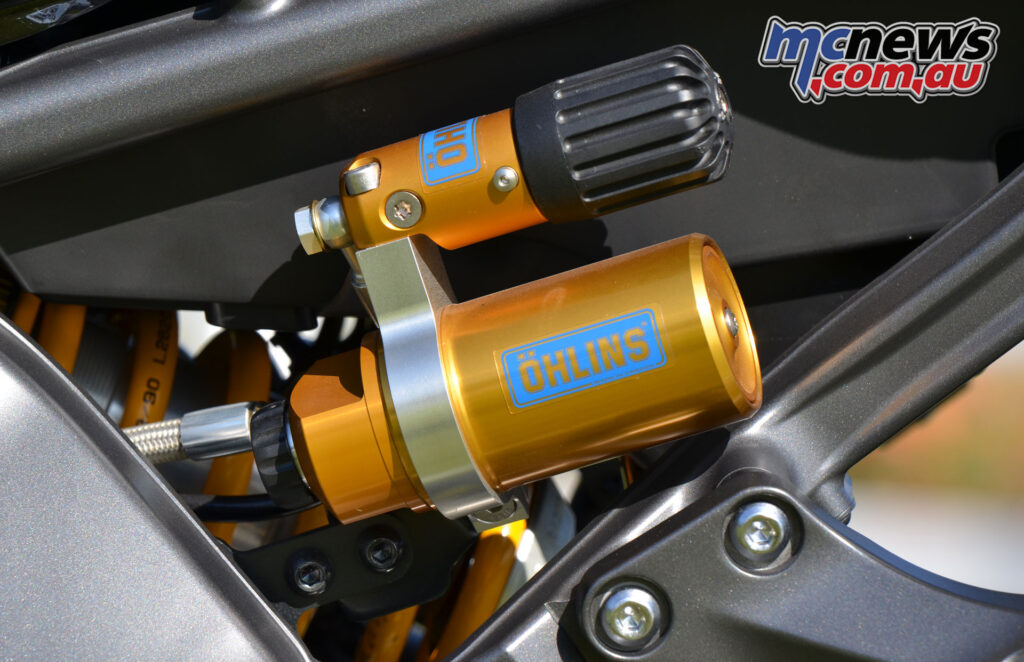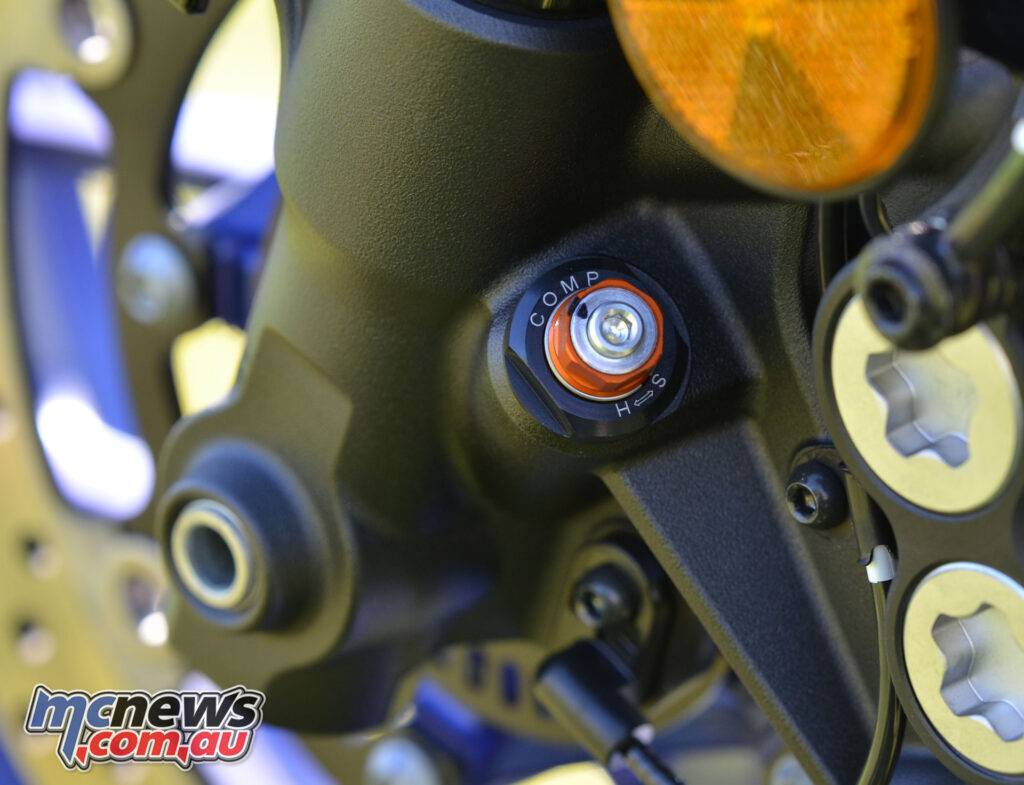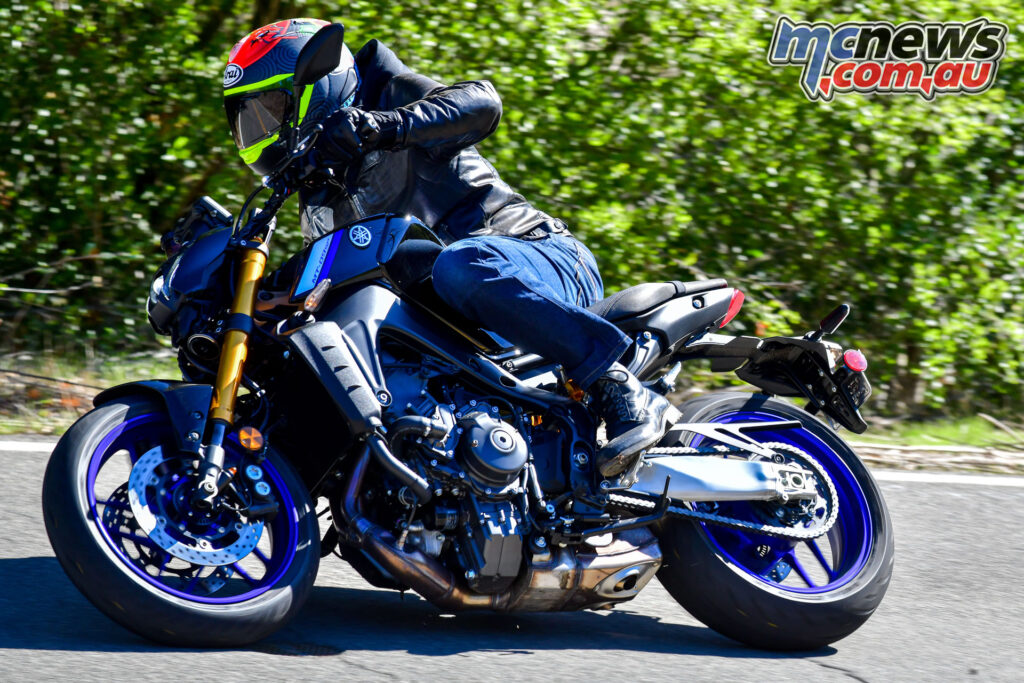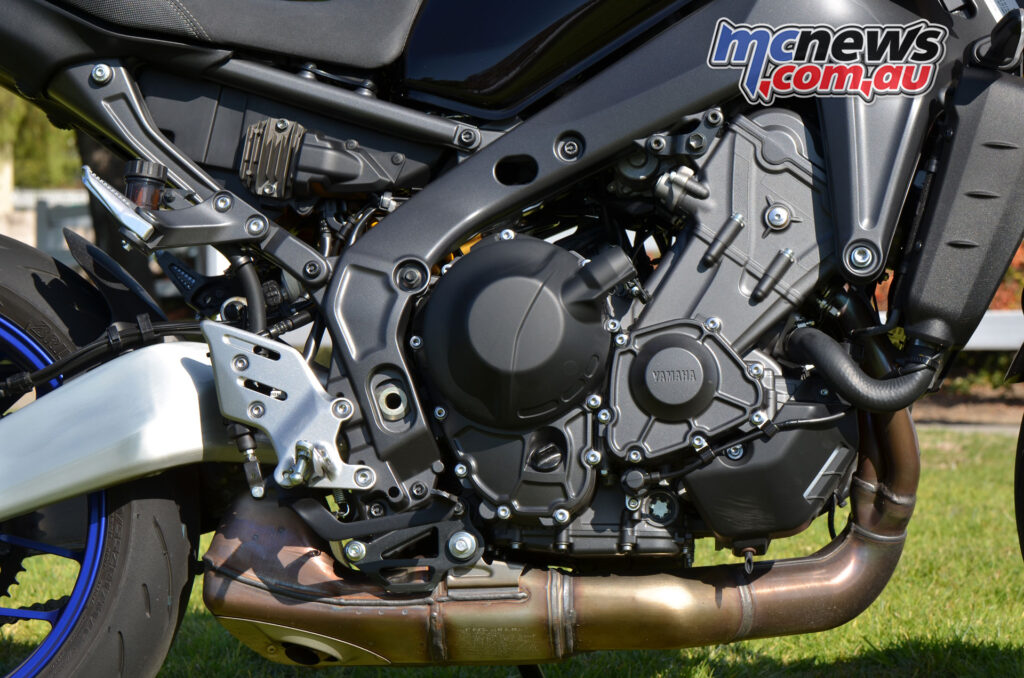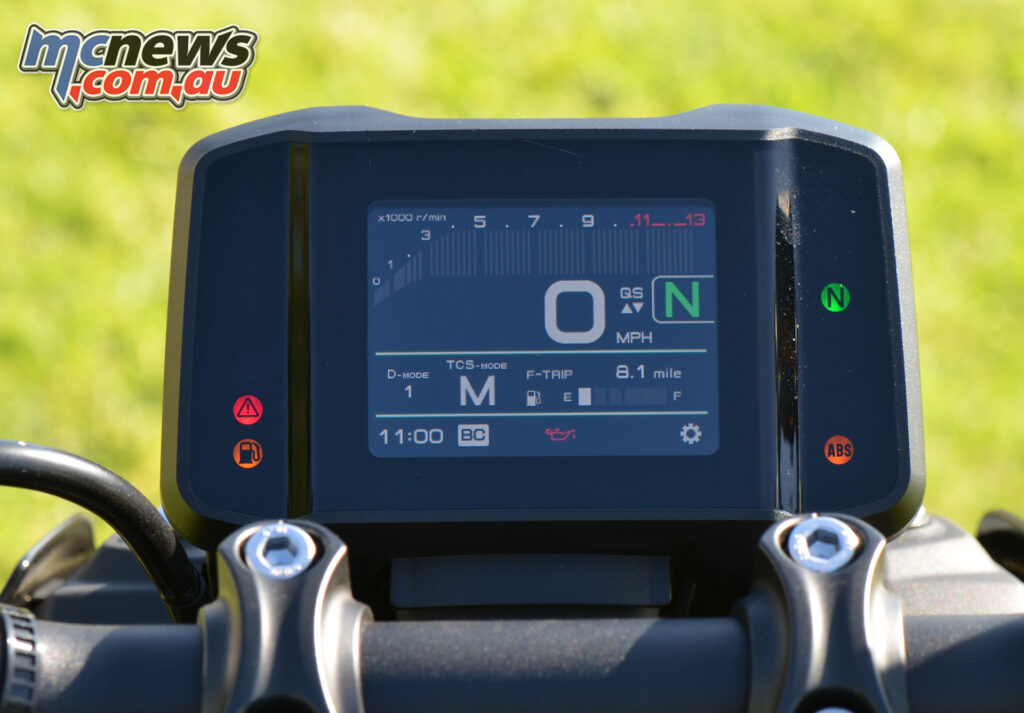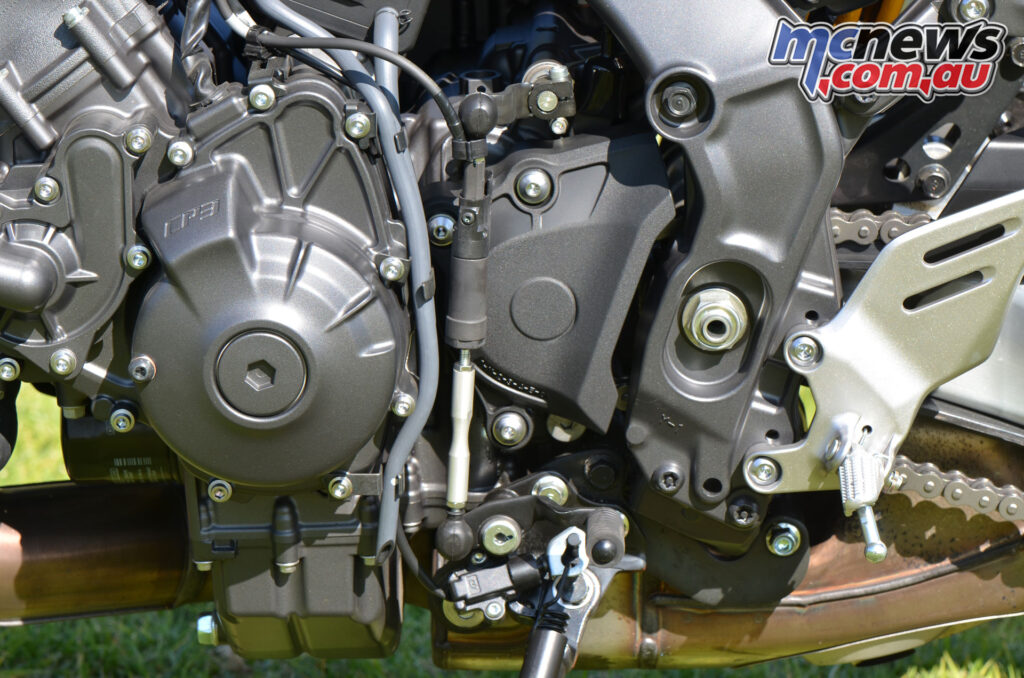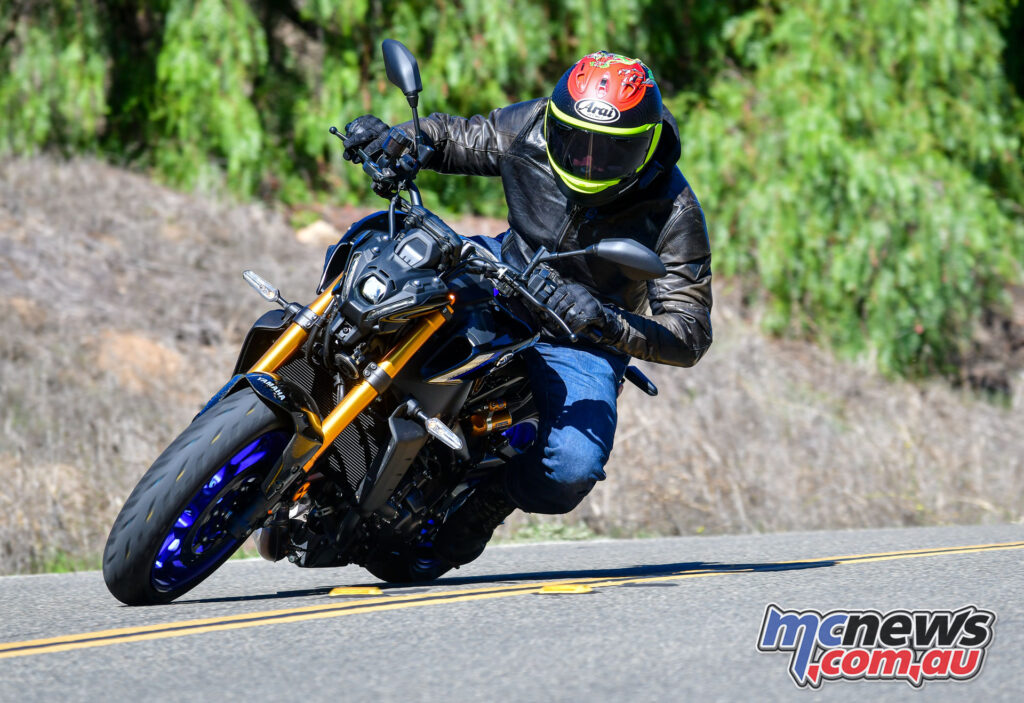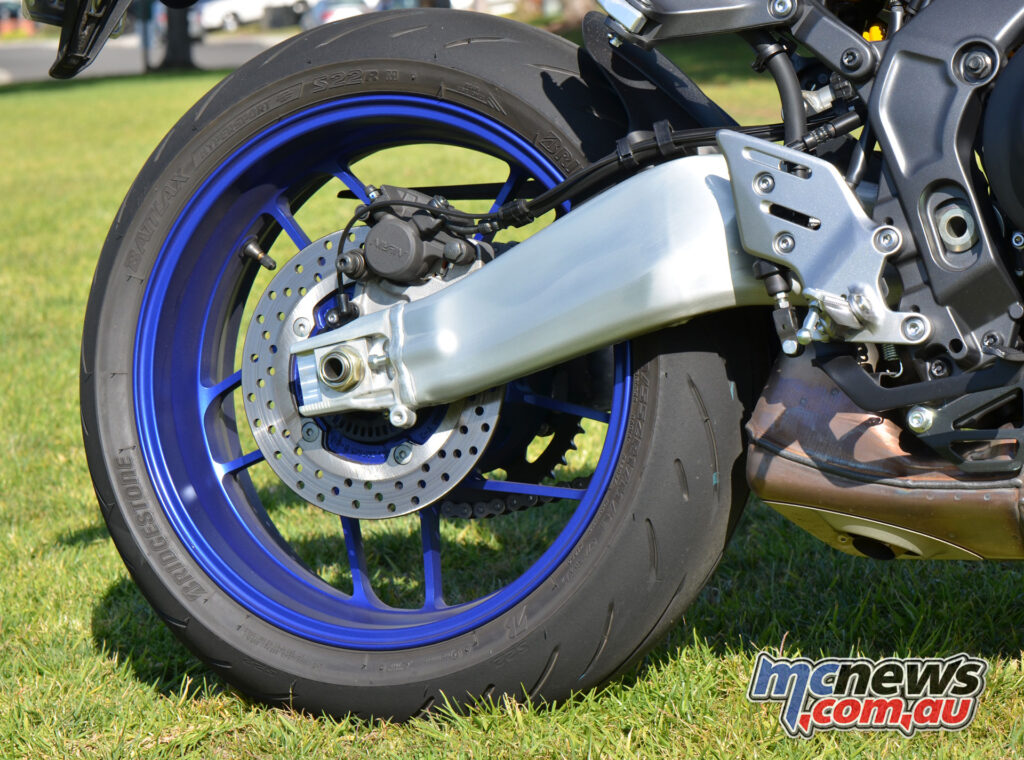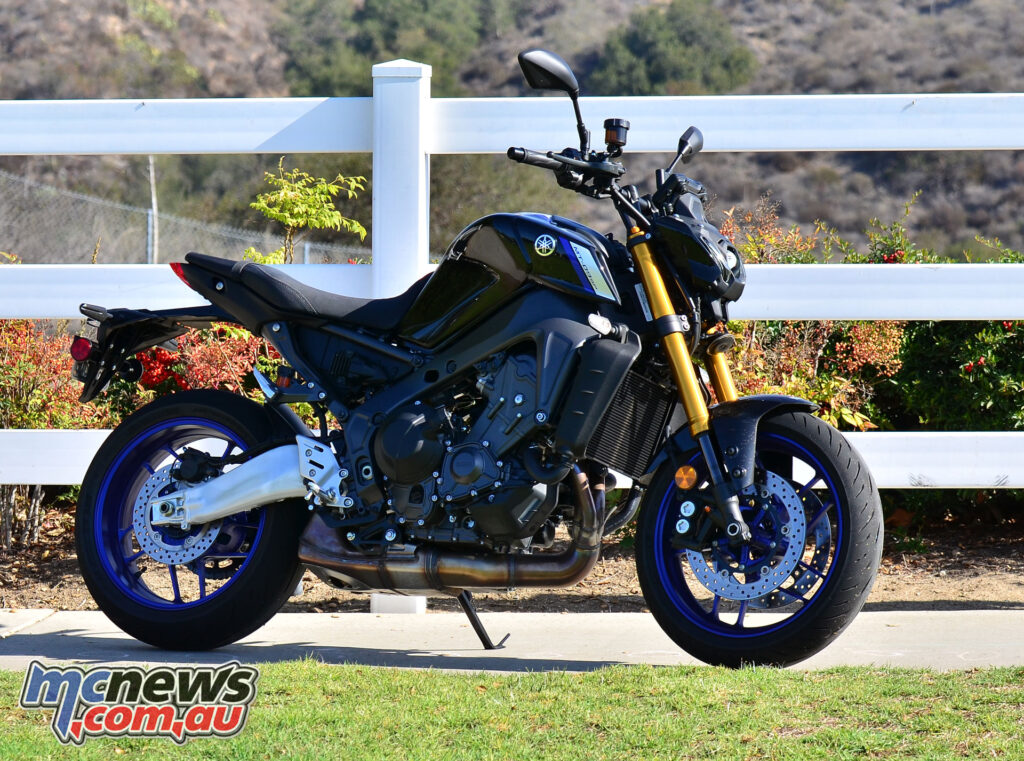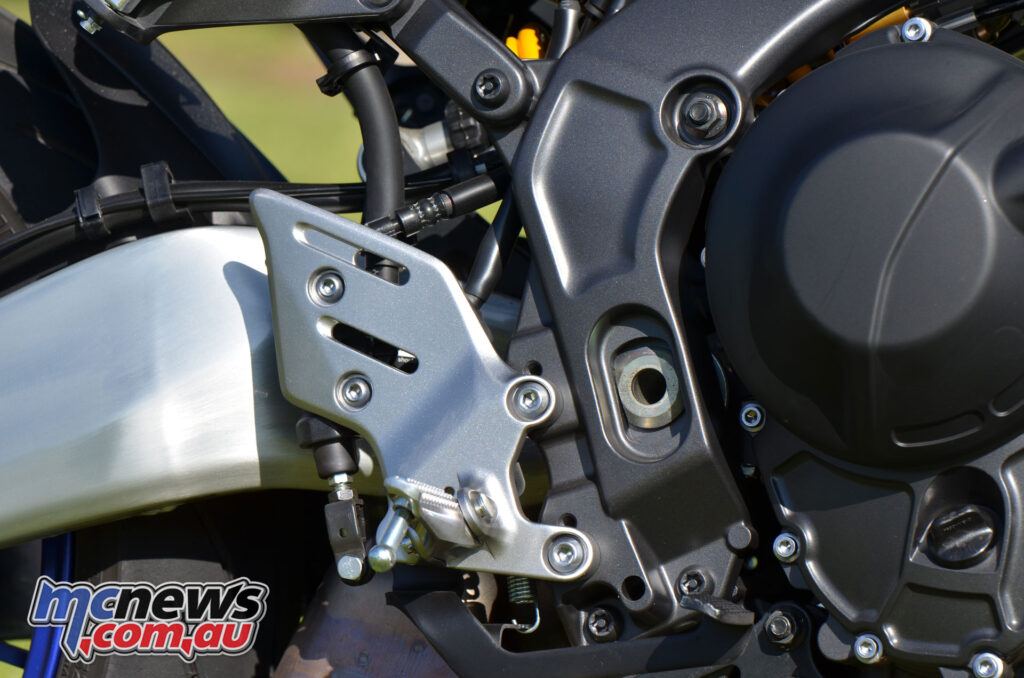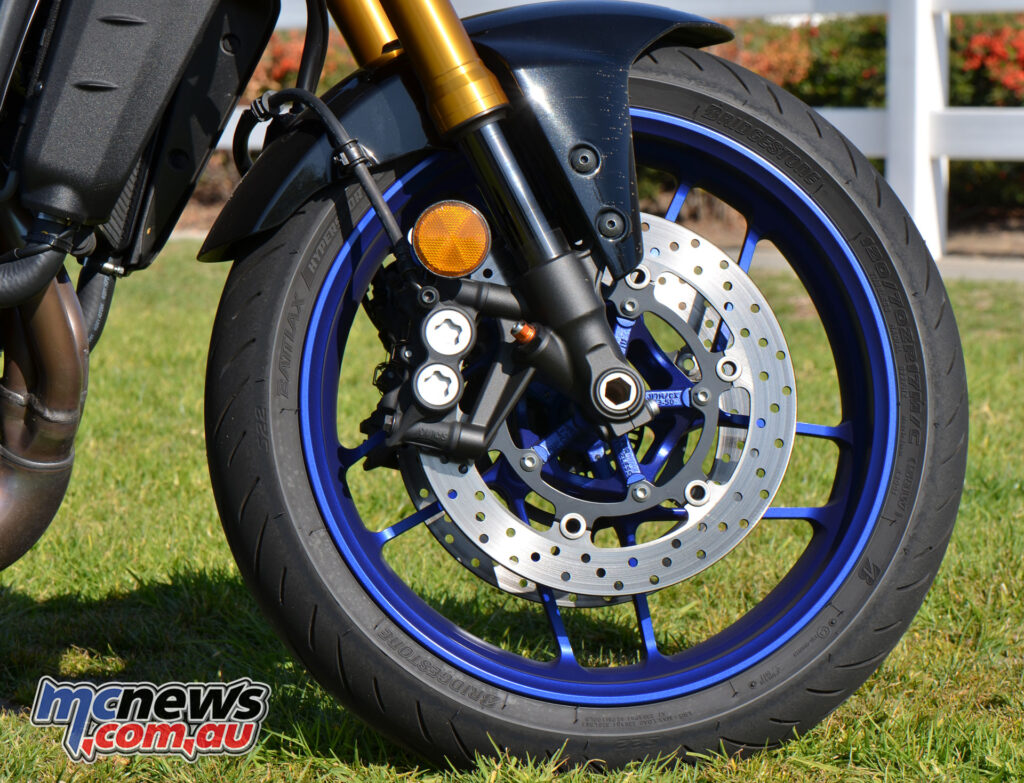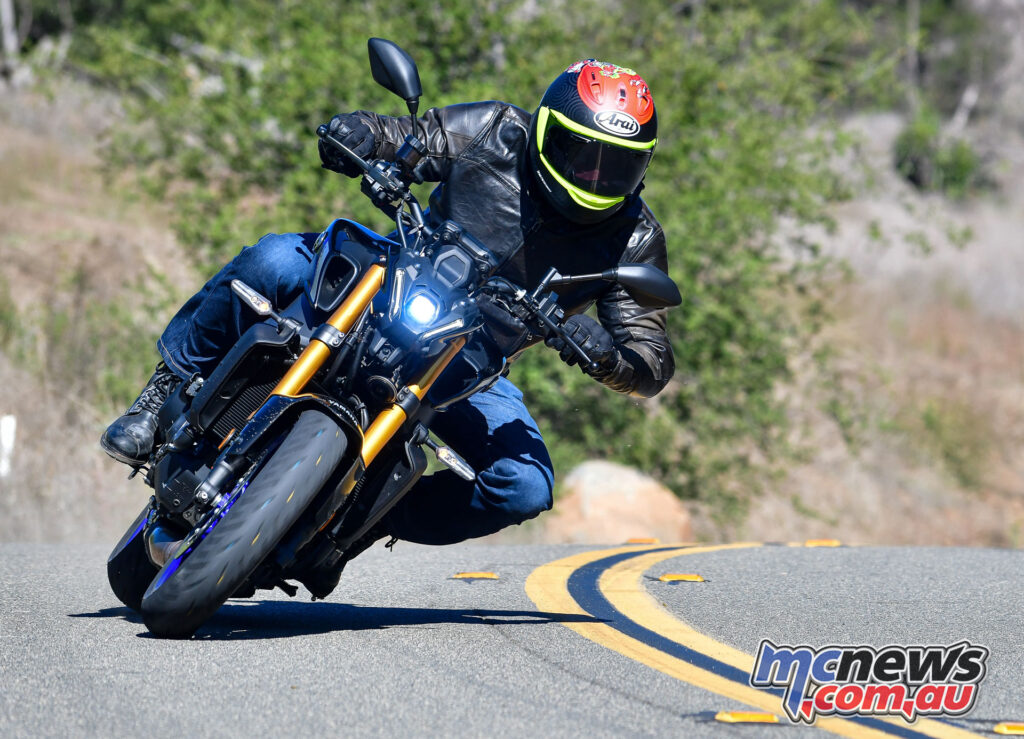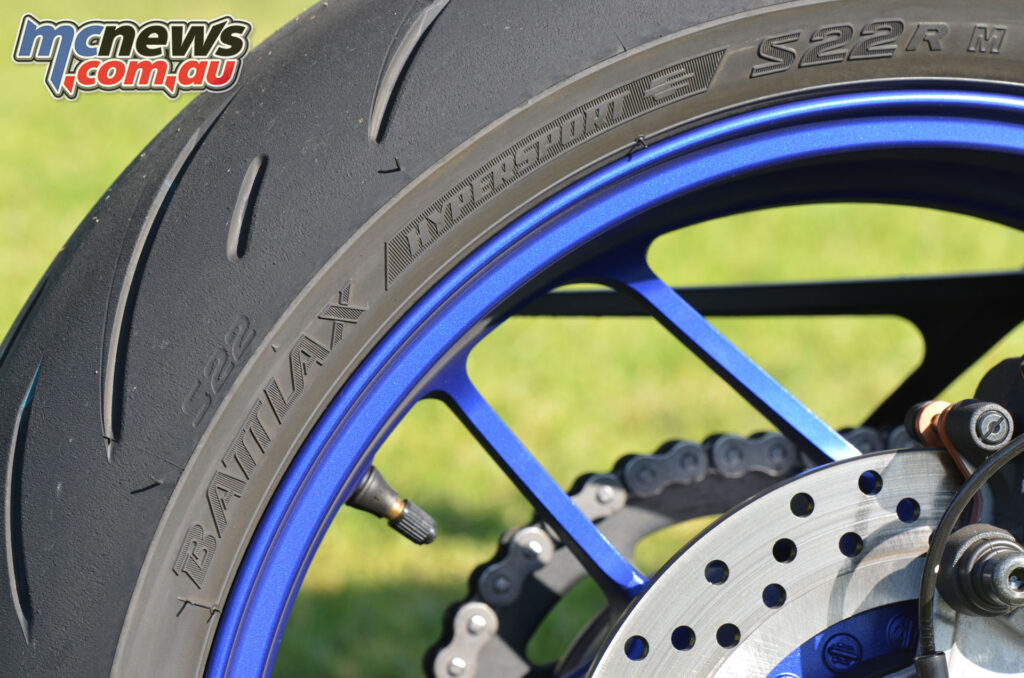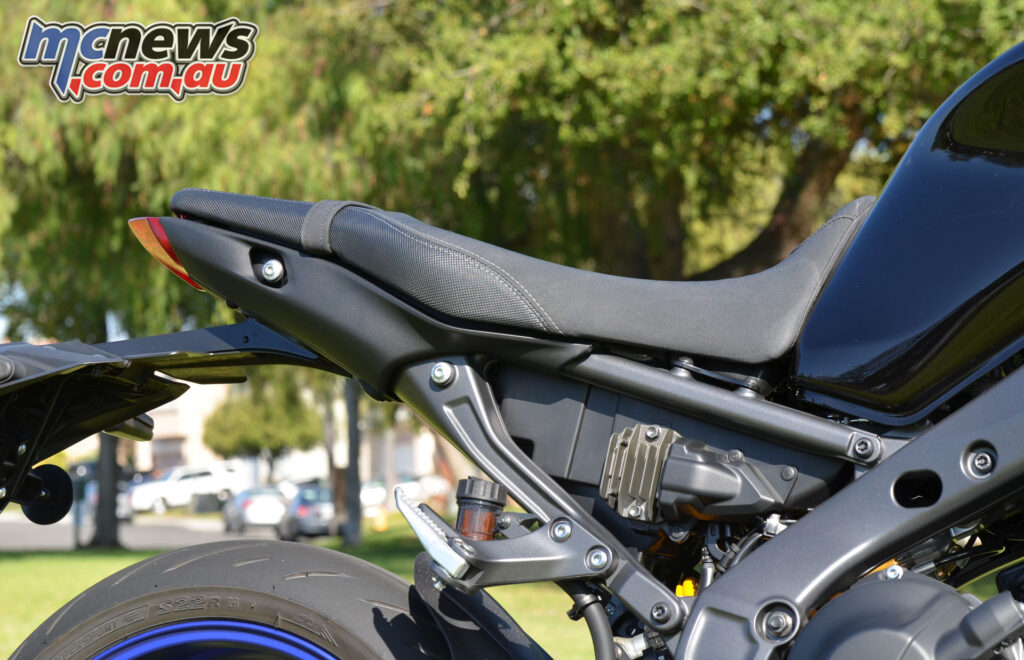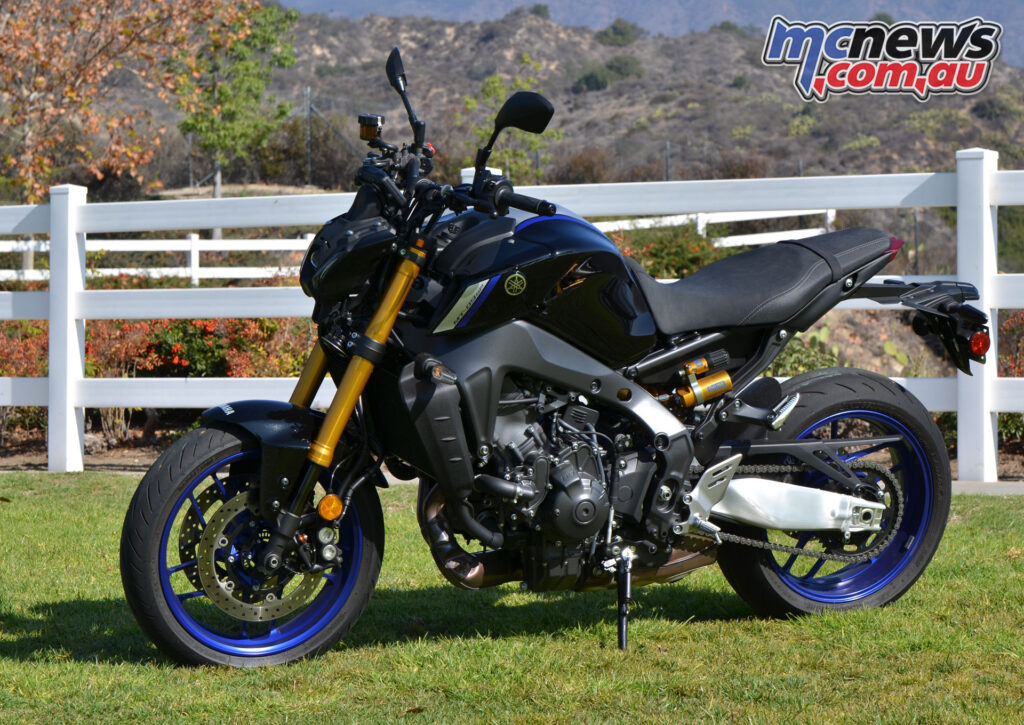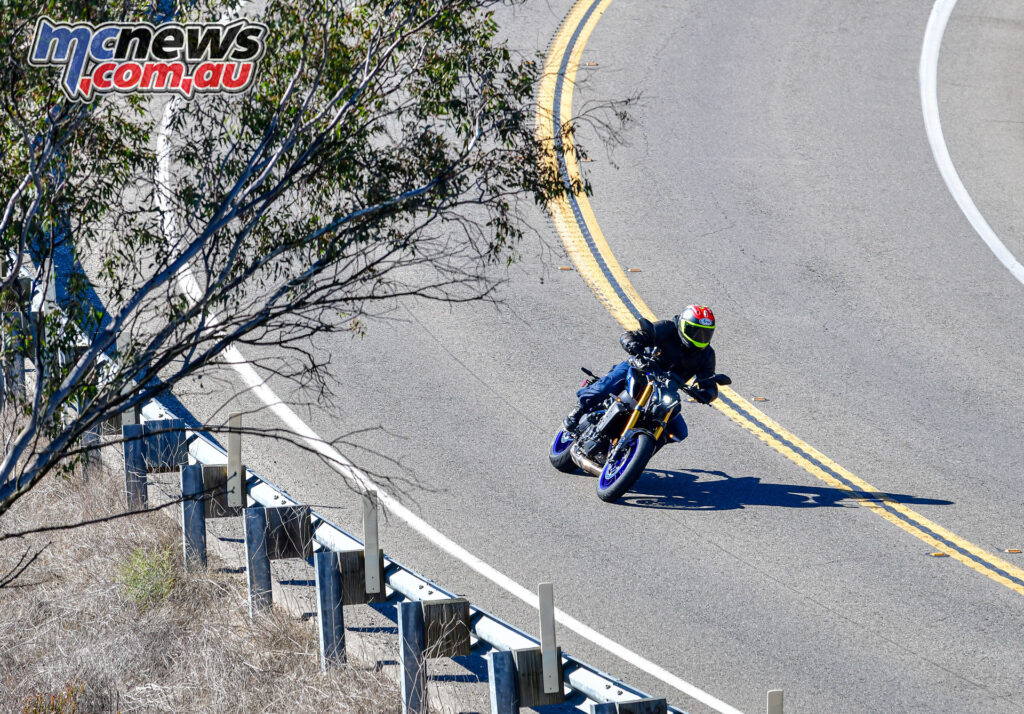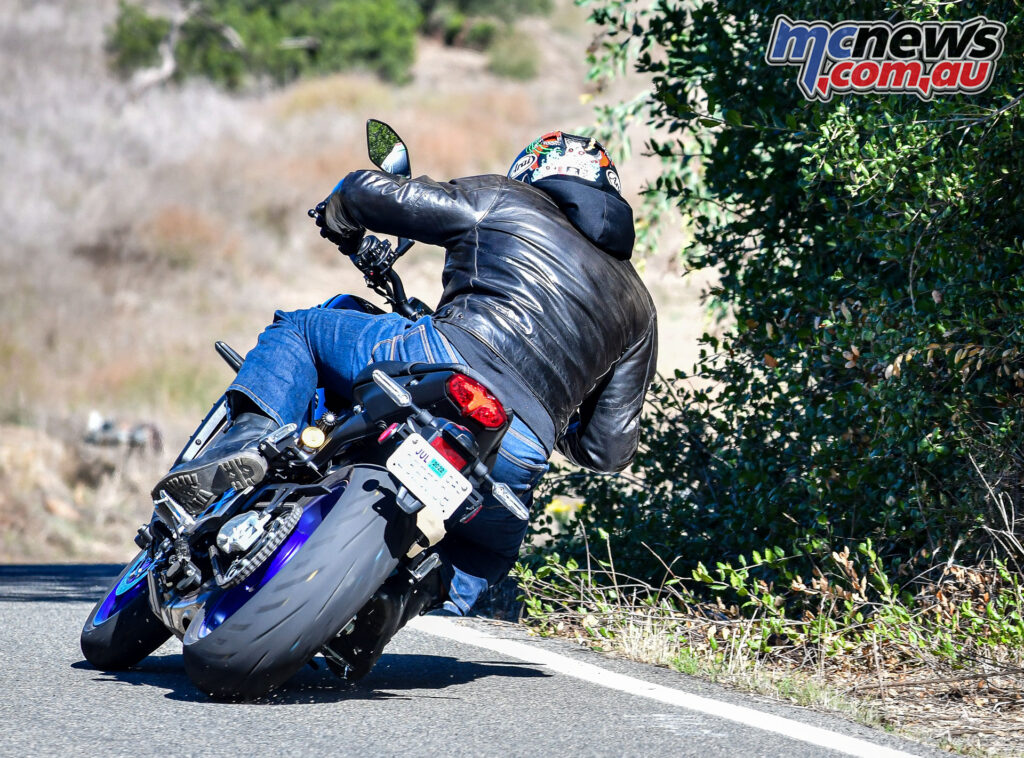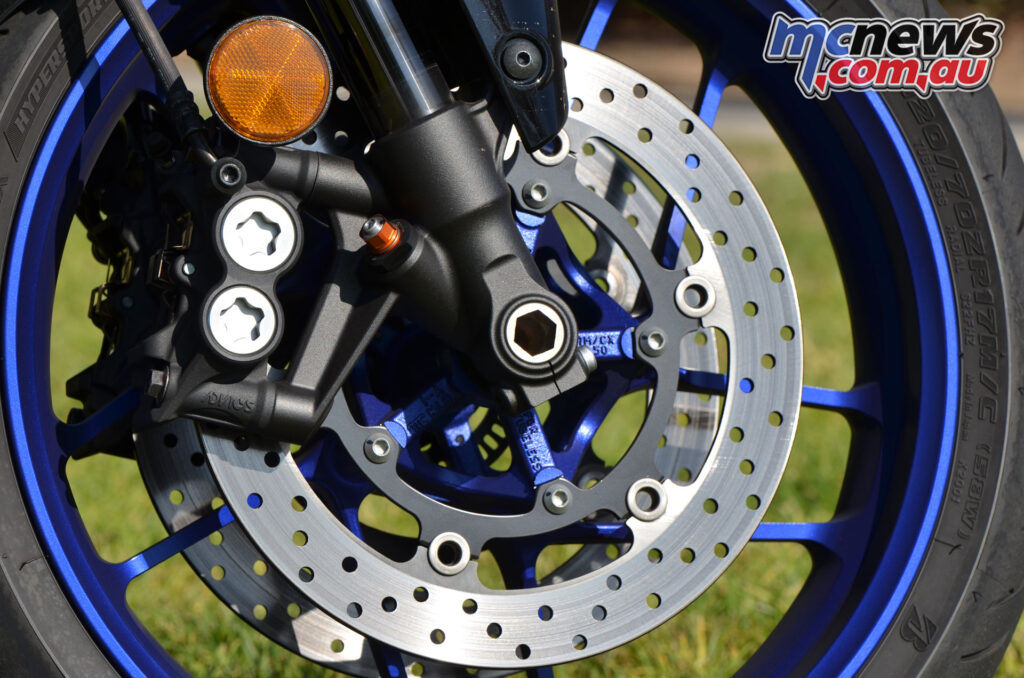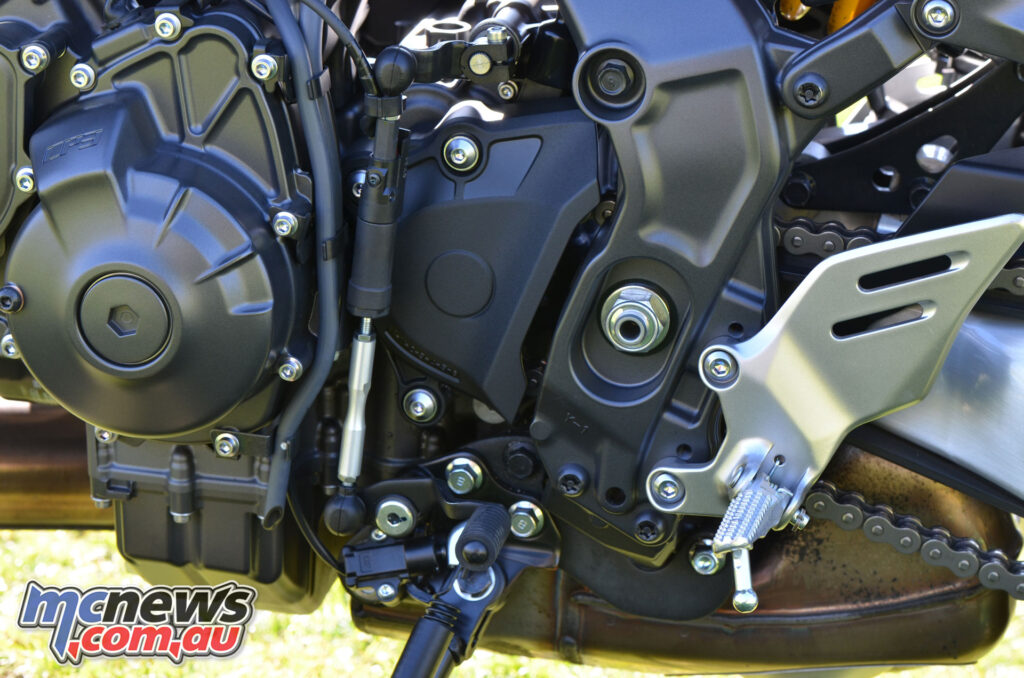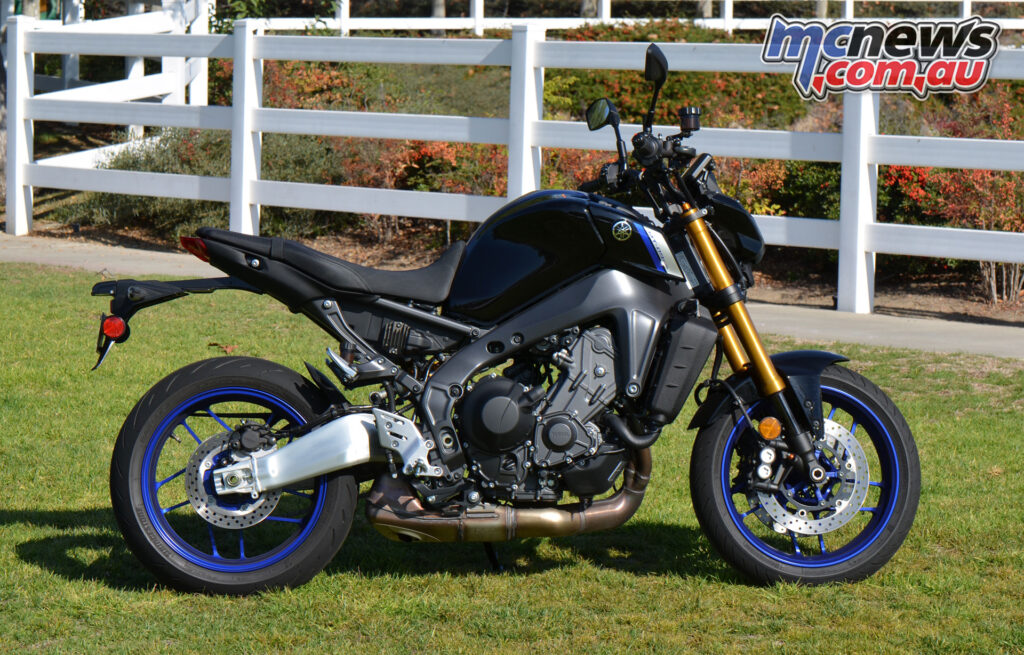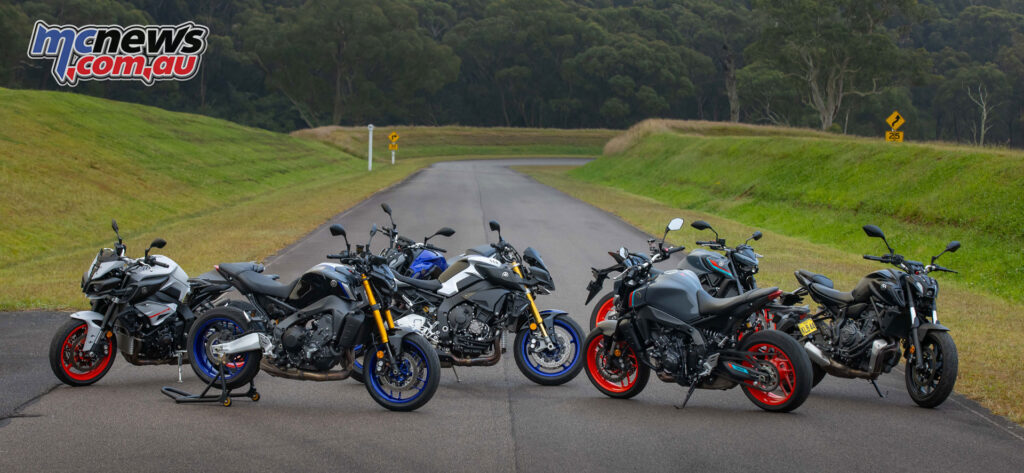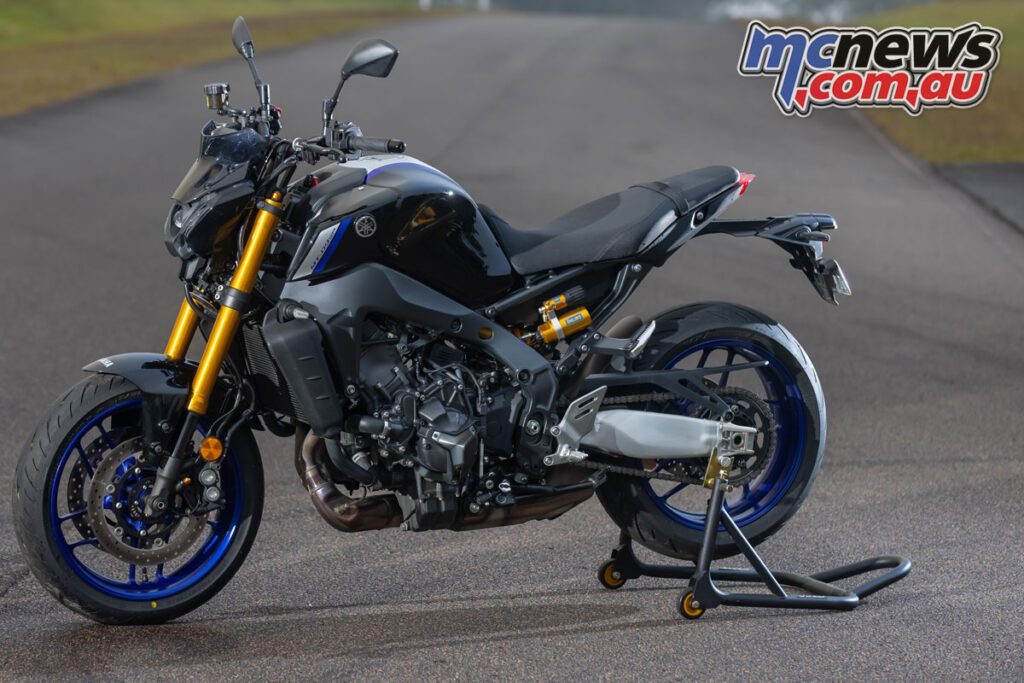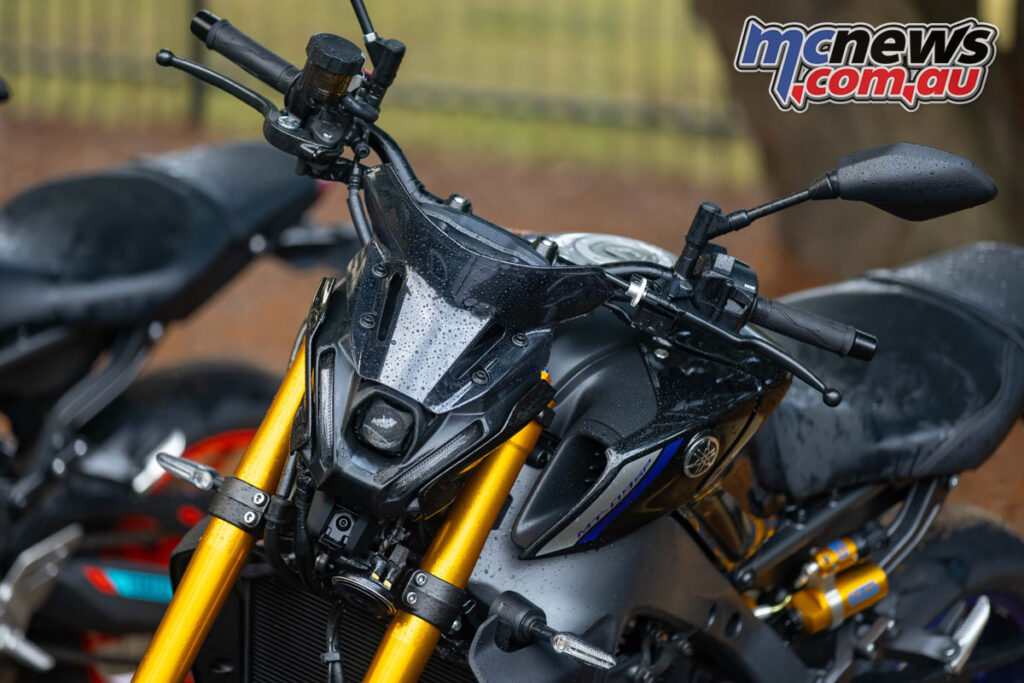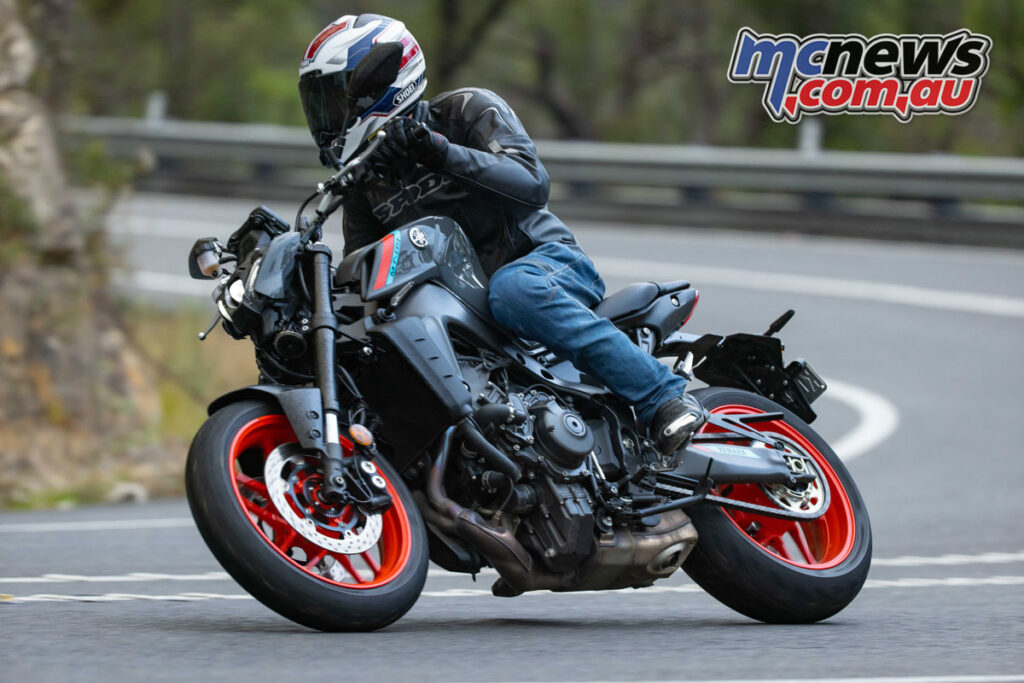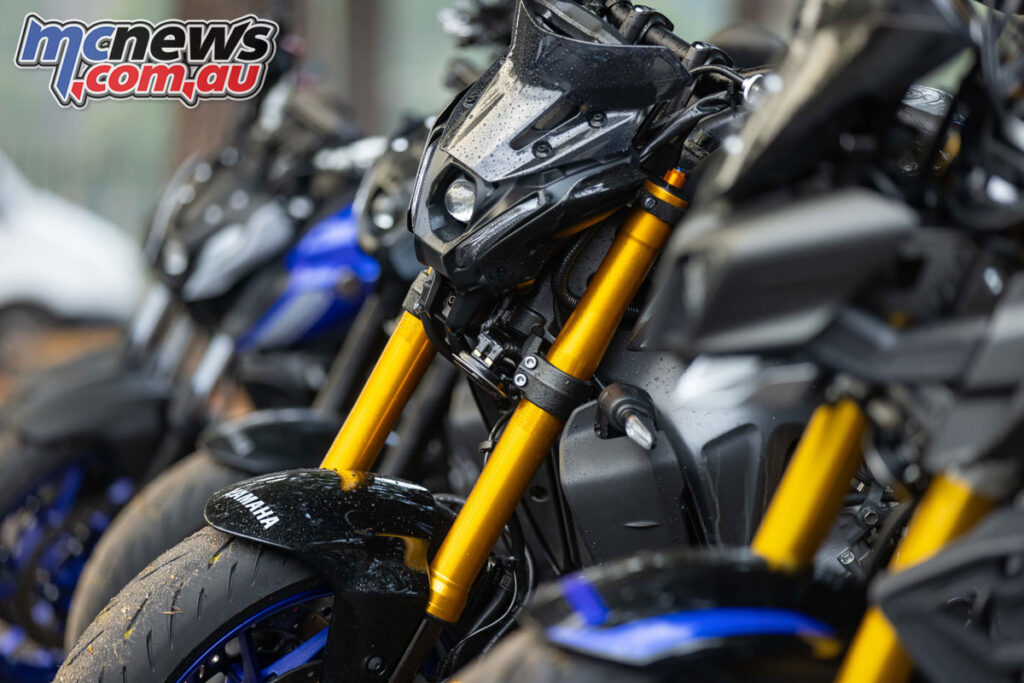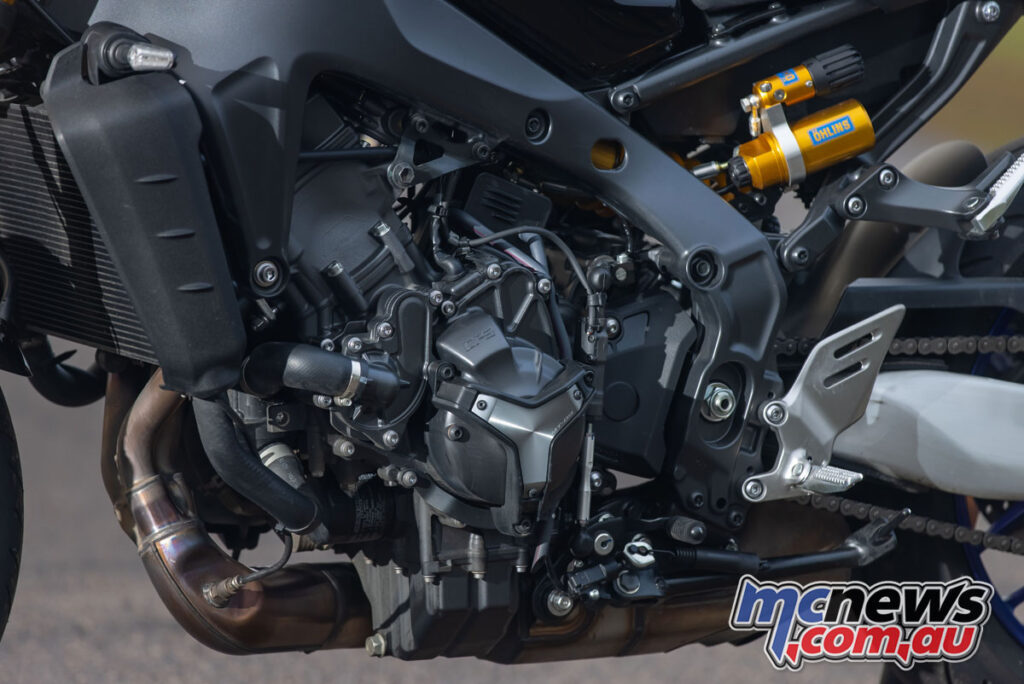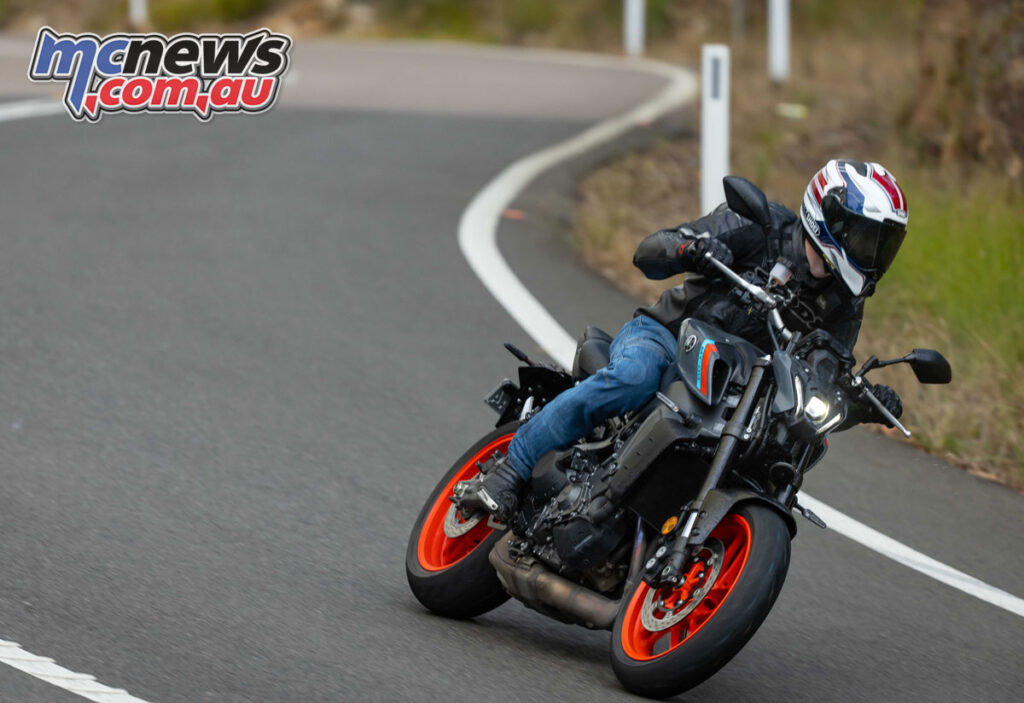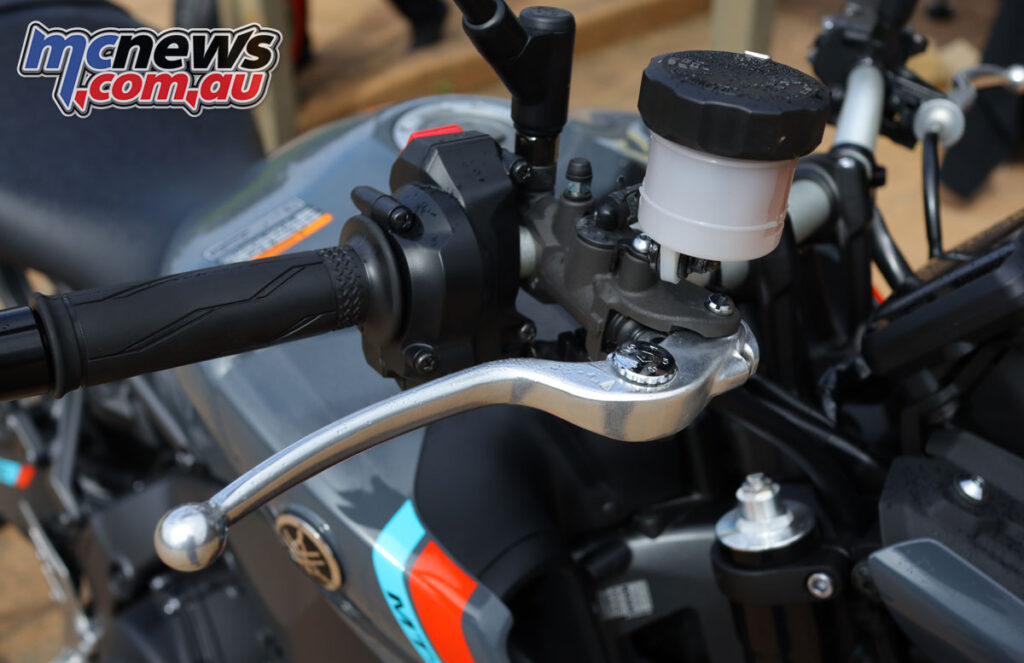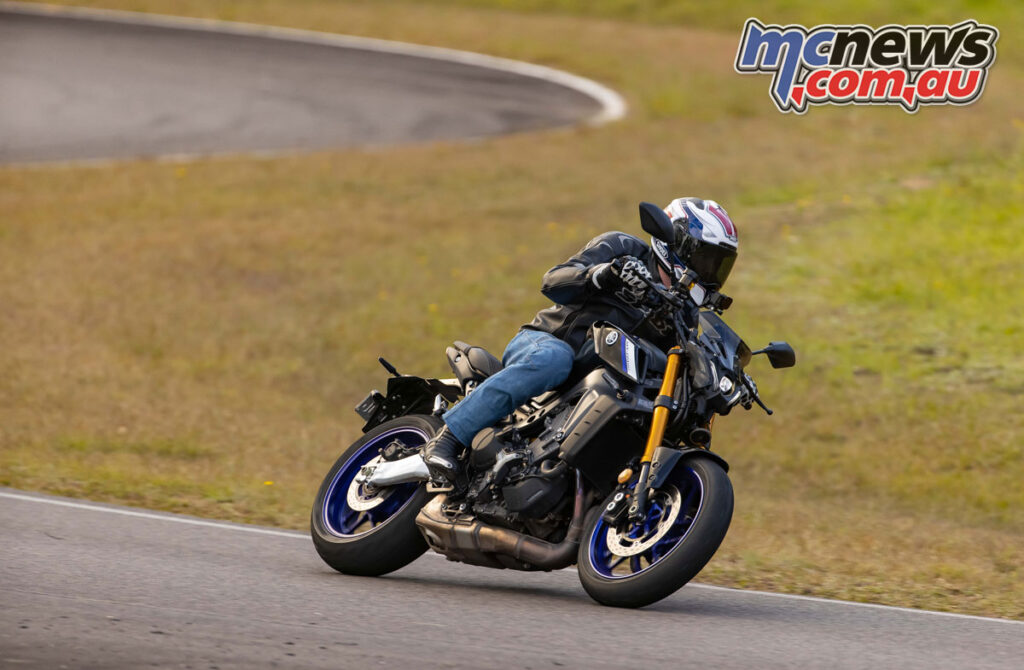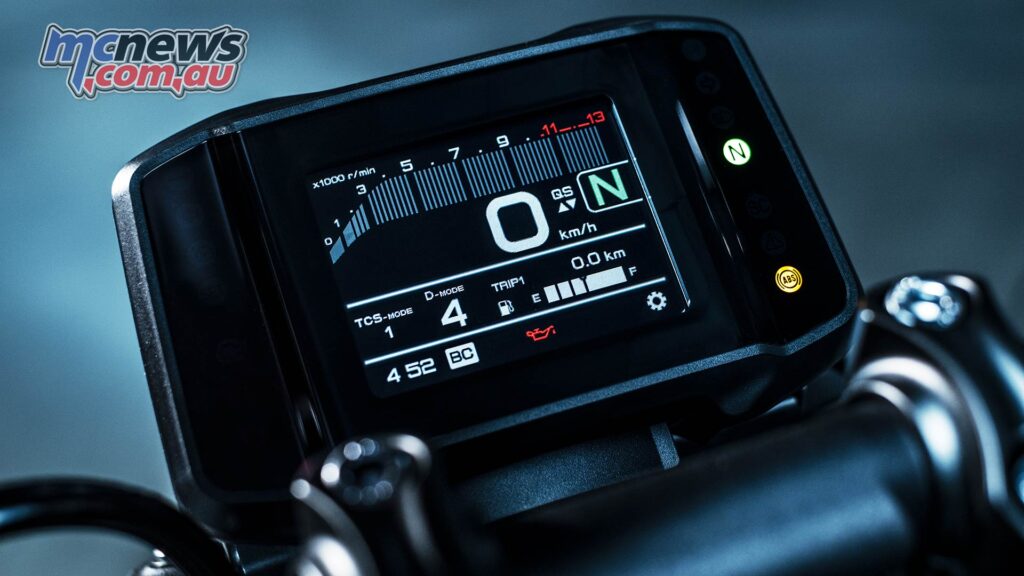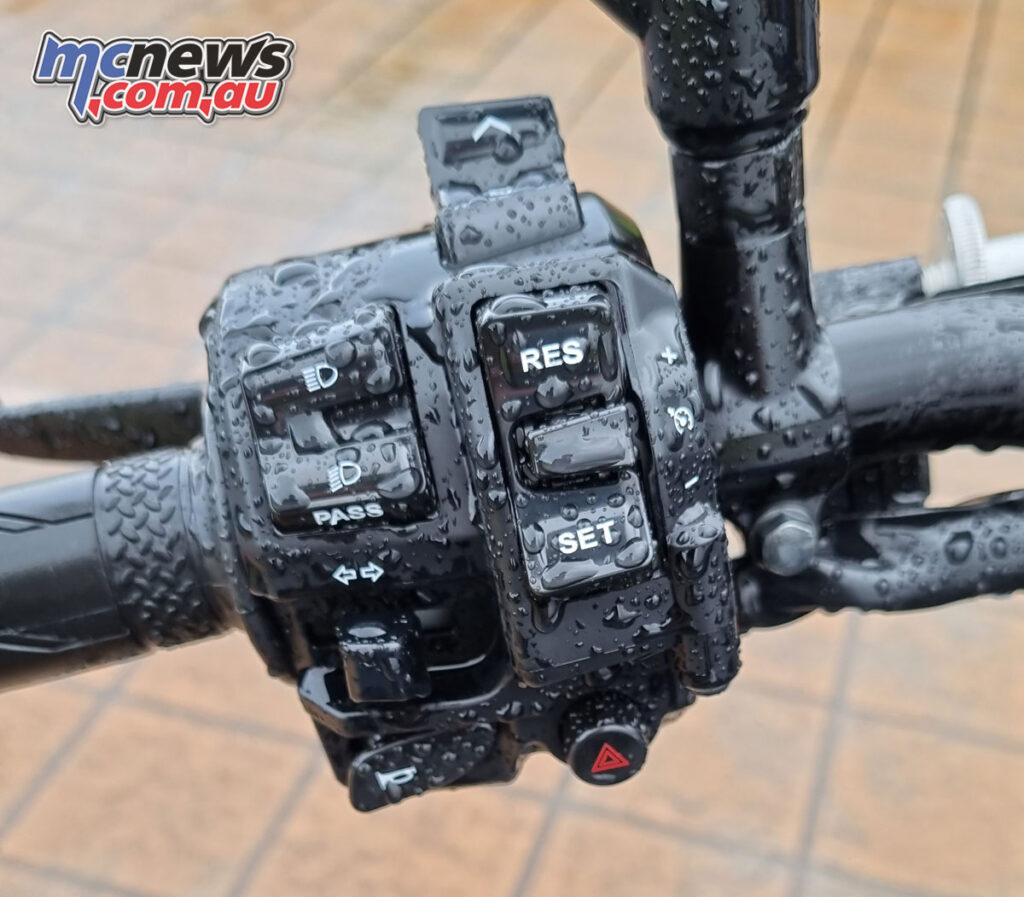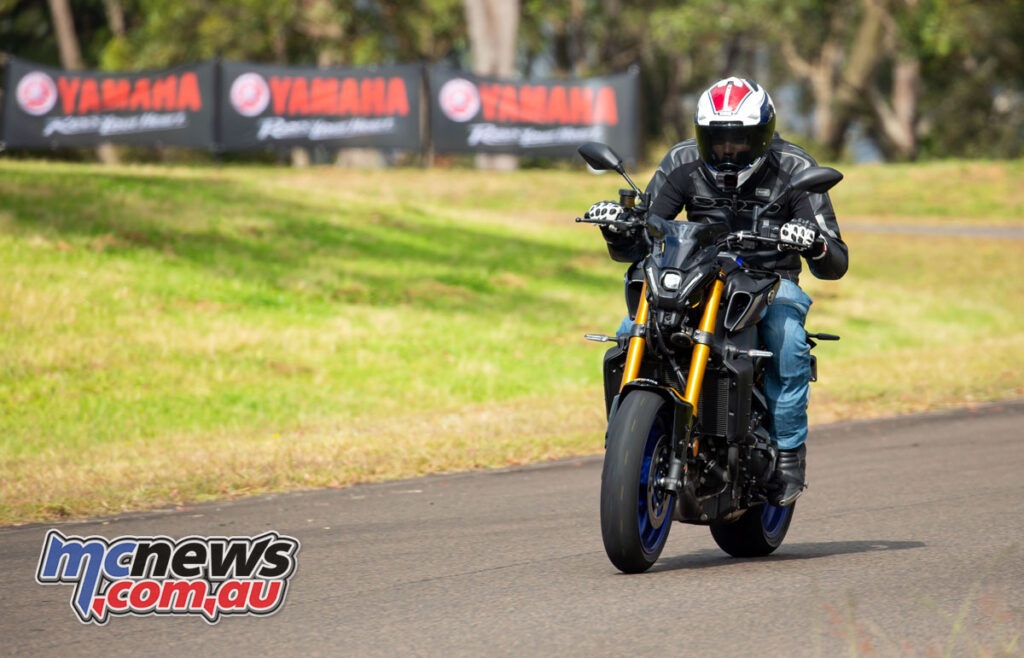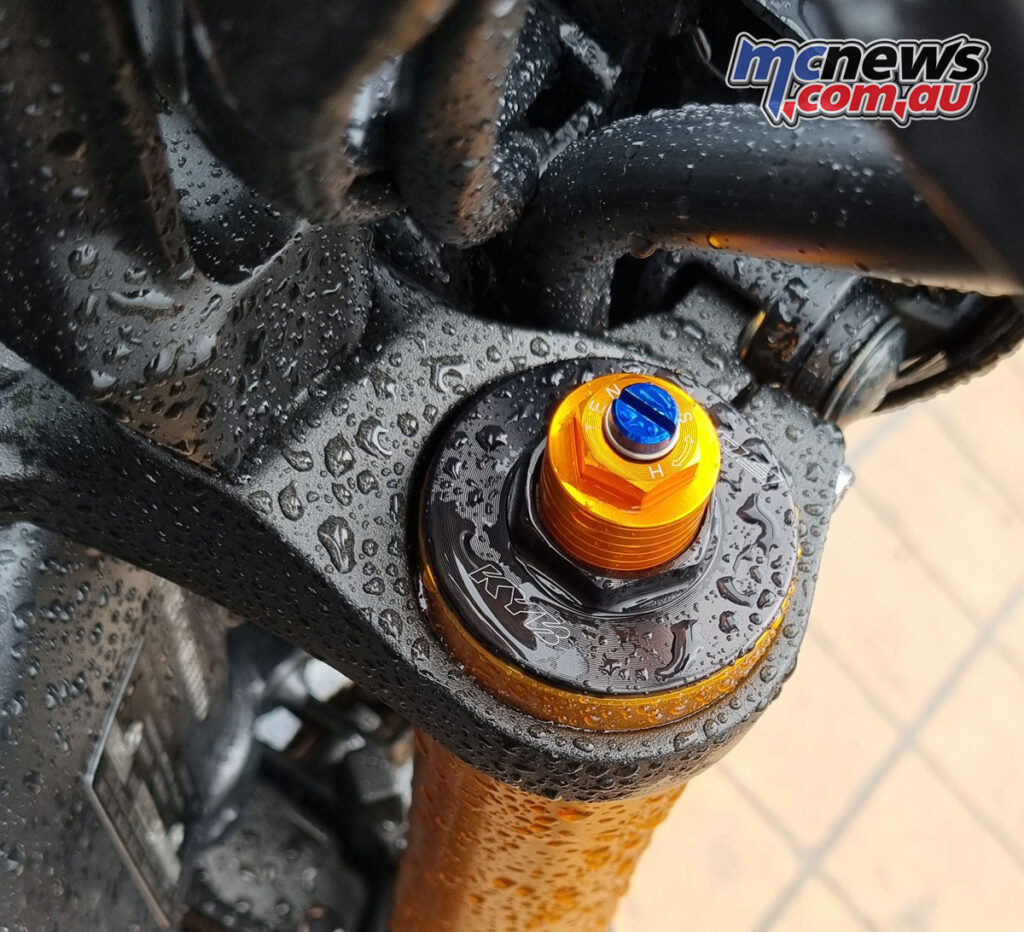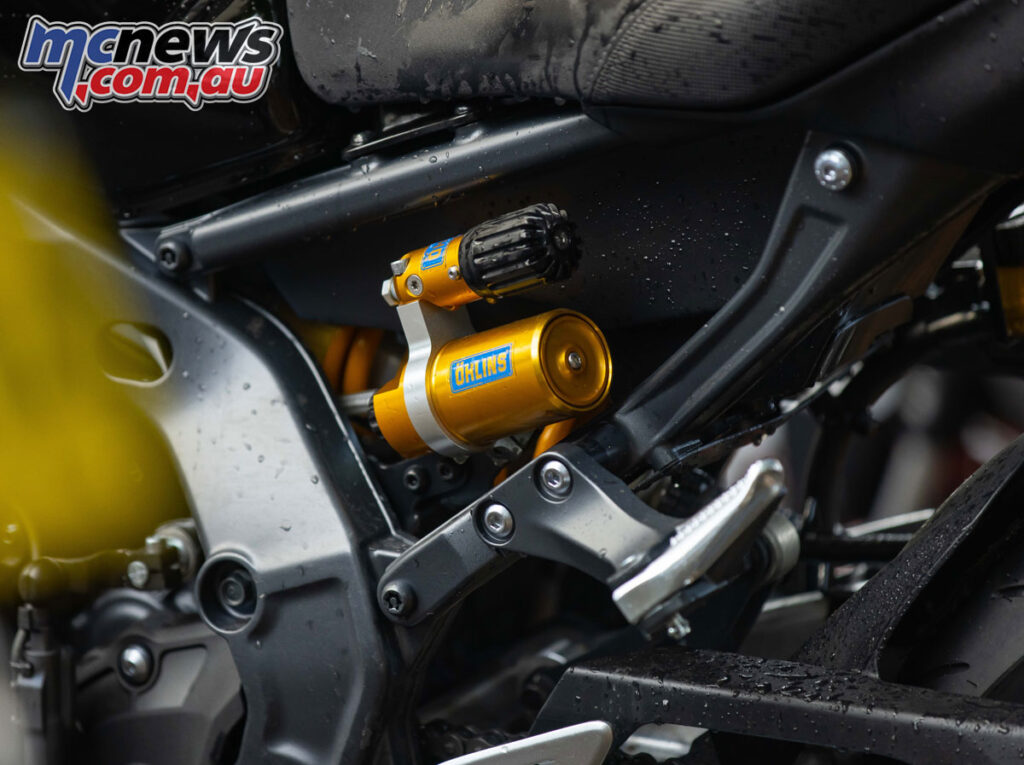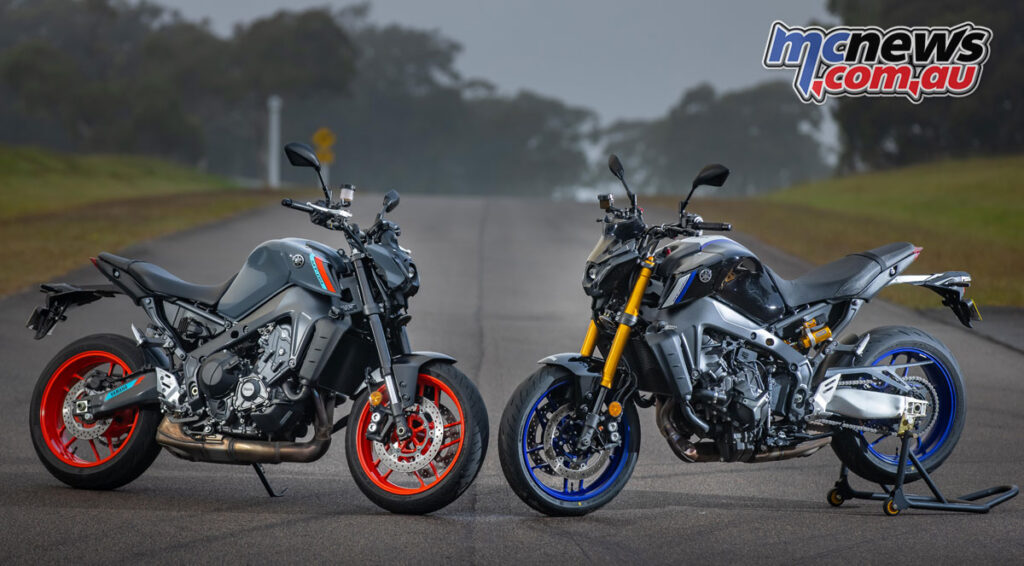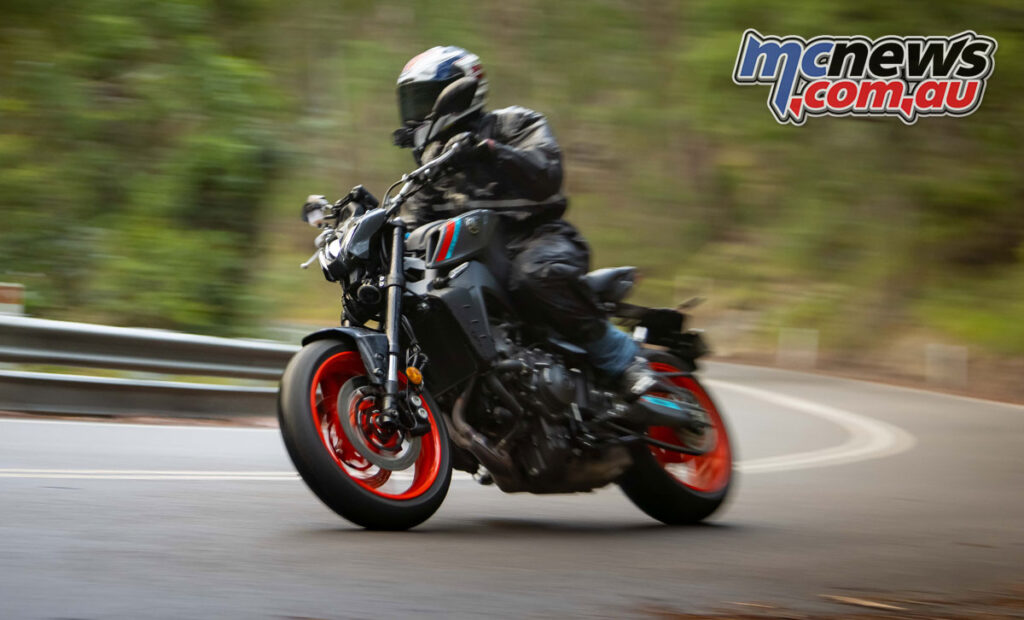Yamaha recently announced the newest evolution of its popular hyper naked middleweight sportbike, the 2024 Yamaha MT-09 and MT-09 SP. This year marks the 10th anniversary of the bike originally known as the FZ-09 in the U.S. but which was released as the MT-09 in 2013.
The new 2024 MT-09 retains the previous model’s liquid-cooled 890cc inline-Triple with DOHC, a lightweight controlled fill diecast aluminum frame, and 6-axis IMU with a full suite of lean-sensitve rider aids, but it adds a long list of new features to further enhance the MT experience. And the MT-09 SP takes it up another notch.
Related: 2023 Yamaha MT-09 SP | First Ride Review
Adding to the electronics suite on the bikes is the addition of a new Back Slip Regulator (BSR), which uses engine RPM and wheel speed data to reduce rear wheel lock up under engine braking by controlling the level of torque produced. This is especially useful in low-grip situations when it is difficult to activate the slipper clutch. The system can be turned on or off in the Yamaha Ride Control (YRC) settings menu.
Both bikes are also equipped with Yamaha’s new third-generation Quick Shift System (QSS) for clutchless upshifts and downshifts. QSS has two settings. Setting 1 enables shifting up while accelerating and shifting down when decelerating. Setting 2 expands functionality across a wider range of situations by permitting downshifts while accelerating and upshifts when decelerating.
From a braking standpoint, the MT-09 is enhanced by a new Brembo radial master cylinder where the piston moves in a direction parallel to brake lever travel. This sends hydraulic pressure in a linear manner when the rider pulls the lever for improved controllability. The new master cylinder is paired with dual 298mm front discs and a single 245mm rear disc. The MT-09 SP levels up with Brembo Stylema monoblock calipers, which feature a slimmer piston and brake pad area compared to conventional calipers, as well as being lighter and more rigid and offering enhanced control. In addition, larger-diameter pistons create more braking force.
Suspension has also been revised for 2024, with the MT-09 sporting a 41mm inverted fork adjustable for preload, compression, and rebound, and the adjustable KYB rear shock features revised linkage settings. New for 2024, higher spring rates and updated damping characteristics are tuned to accommodate a wider range of speeds and to match new standard fitment Bridgestone Battlax Hypersport S23 tires.
On the MT-09 SP, a DLC-coated 41mm KYB fork offers full adjustability for preload, rebound, and high- and low-speed compression damping. In the back, the Öhlins shock is also fully adjustable and comes equipped with a remote preload adjuster enabling quick and easy changes.
See all of Rider’s Yamaha coverage here.
New for 2024, MT-09 riders can further customize their riding experience via Yamaha Ride Control (YRC) settings that allow the selection of engine power characteristics and electronic intervention levels. Three integrated ride modes are programmed with factory settings to suit different situations: Sport, Street, and Rain. Additionally, riders can create two custom programs with tailored settings to suit exact preferences. YRC settings can be customized either directly within the TFT display menu or on a smartphone via the Y-Connect app.
In addition to factory and custom setting available on the standard MT-09, SP specification adds four exclusive Track modes allowing for more specialized track settings, including the option of choosing between two Engine Brake Management settings and the ability to turn rear ABS off.
Intuitive new turn signal functions further improve the riding experience. A soft click of the indicator switch will flash the turn signals three times for lane changes, while a full click will flash continuously. Turn signals will also self-cancel after 15 seconds and once the bike has travelled for more than 500 feet.
Already known for its engaging riding experience, ergonomics on the new 2024 MT-09 have been further enhanced, including a lower handlebar position with two customizable settings. Newly designed footrests sit slightly more rearward and are also adjustable. Combined with the new fuel tank design, which sits 30mm lower than the previous model, riding position is more dedicated, and handlebar steering angle is 4 degrees greater on each side for a tighter turning radius and improved low-speed maneuverability. Additionally, the new two-part seat design is slimmer for increased freedom of movement and an easier reach to the ground.
Visually speaking, a new headlight has a bi-functional LED projector that features a compact diameter lens module that is both smaller and thinner than the previous model while still providing a broad, powerful beam. Transparent twin LED position lights complete the MT-09’s more compact, sharp, and aggressive face. This theme is continued at the rear with a newly designed LED taillight with a slimmer look and new color layout, along with LED turn signals. In addition the lower position of the fuel tank, it has also been redesigned with sharper, more defined lines while still maintaining the distinctively modern street aesthetic.
And of course, you can’t forget the distinctive wail of the MT-09’s crossplane Triple powerplant. The 2024 MT-09 features a new two-duct intake design with acoustic amplifier grilles located on top of the fuel tank to accentuate high frequency induction sounds, delivering the CP3’s induction roar directly to the rider for an enhanced sensation of torque and acceleration.
Both bikes have a new 5-inch full-color TFT display replacing the 3.5-inch display on the previous model and offering four different themes to suit specific riding situations or individual preference. The screen is navigated through all-new integrated handlebar switches, and Yamaha says the buttons’ shape and feel have been extensively refined to provide intuitive operation in a compact, easy-to-use solution. For the SP, the on-track riding experience is further enhanced by a dedicated SP-exclusive Track theme featuring a prominent lap timer.
Connectivity now comes standard on the MT-09 via a built-in Communication Control Unit (CCU), allowing riders to link their smartphone to the motorcycle using Yamaha’s free Y-Connect app. As well as receiving call and message notifications on the TFT display, a new dimension is added to the ride with the option of taking calls or listening to music through use of an aftermarket Bluetooth headset (not provided). Additionally, full turn-by-turn navigation is available through the Garmin StreetCross app. Finally, riders can opt to personalize the TFT display by sending images from their smartphone via the Y-Connect app.
The 2024 MT-09 SP will also incorporate Yamaha’s Smart Key System. When the smart key is within a specified range of the motorcycle, such as in your pocket, the engine can be started by turning a newly designed switch. The new system also features a lock and unlock function for the fuel tank cap for added convenience.
The new 2024 Yamaha MT-09 will be available in either Team Yamaha Blue, Midnight Cyan, or Matte Raven Black, arriving to dealers in March 2024 for $10,599 MSRP.
The 2024 MT-09 SP comes in an R1M-inspired Liquid Metal/Raven color scheme with the SP’s hallmark polished and clear coated aluminum swingarm. The MT-09 SP will arrive in dealerships in late spring 2024 for $12,299 MSRP.
For more information, visit the Yamaha Motorsports website.
Check out more new/updated bikes in Rider’s 2024 Motorcycle Buyers Guide
The post 2024 Yamaha MT-09 and MT-09 SP Review | First Look appeared first on Rider Magazine.
Source: RiderMagazine.com

